The celebration of Holy Week wouldn’t be complete without visiting churches to commemorate and reflect on Christ’s passion. Today, we visit 15 of the oldest churches in the Philippines.
Visiting these oldest parishes is also like traveling back in time because of their rich history and architectural features. From intricate designs to centuries-old stories, these iconic structures stand as testaments to the country’s enduring heritage and deep faith.
After all, a church is not only a place of worship but a faithful community of people united in Christ.
Oldest Churches in the Philippines
1. Basilica Minore del Santo Niño, Cebu (1565)
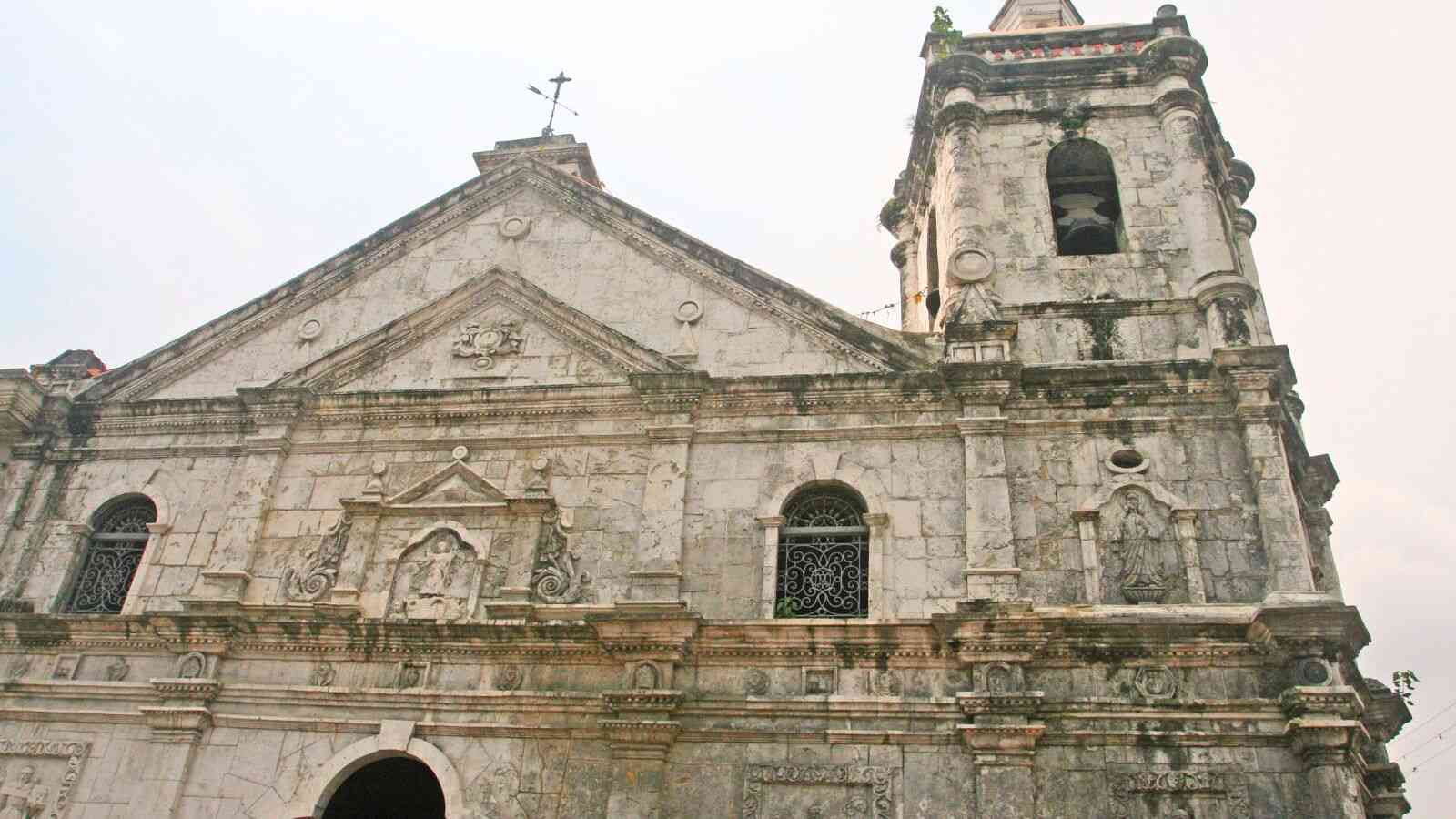
The church of Sto. Niño de Cebu was established on April 28, 1565. After 400 years, the Vatican proclaimed it “Basilica Minore.” The magnificent design of the basilica is a mix of Baroque and Colonial styles.
It is recognized as the oldest church in the Philippines. It pays homage to the Holy Child Jesus, where the original and oldest religious relic in the Philippines resides.
The structure stands on the location where the Santo Niño de Cebu statue was discovered during Miguel López de Legazpi‘s expedition.
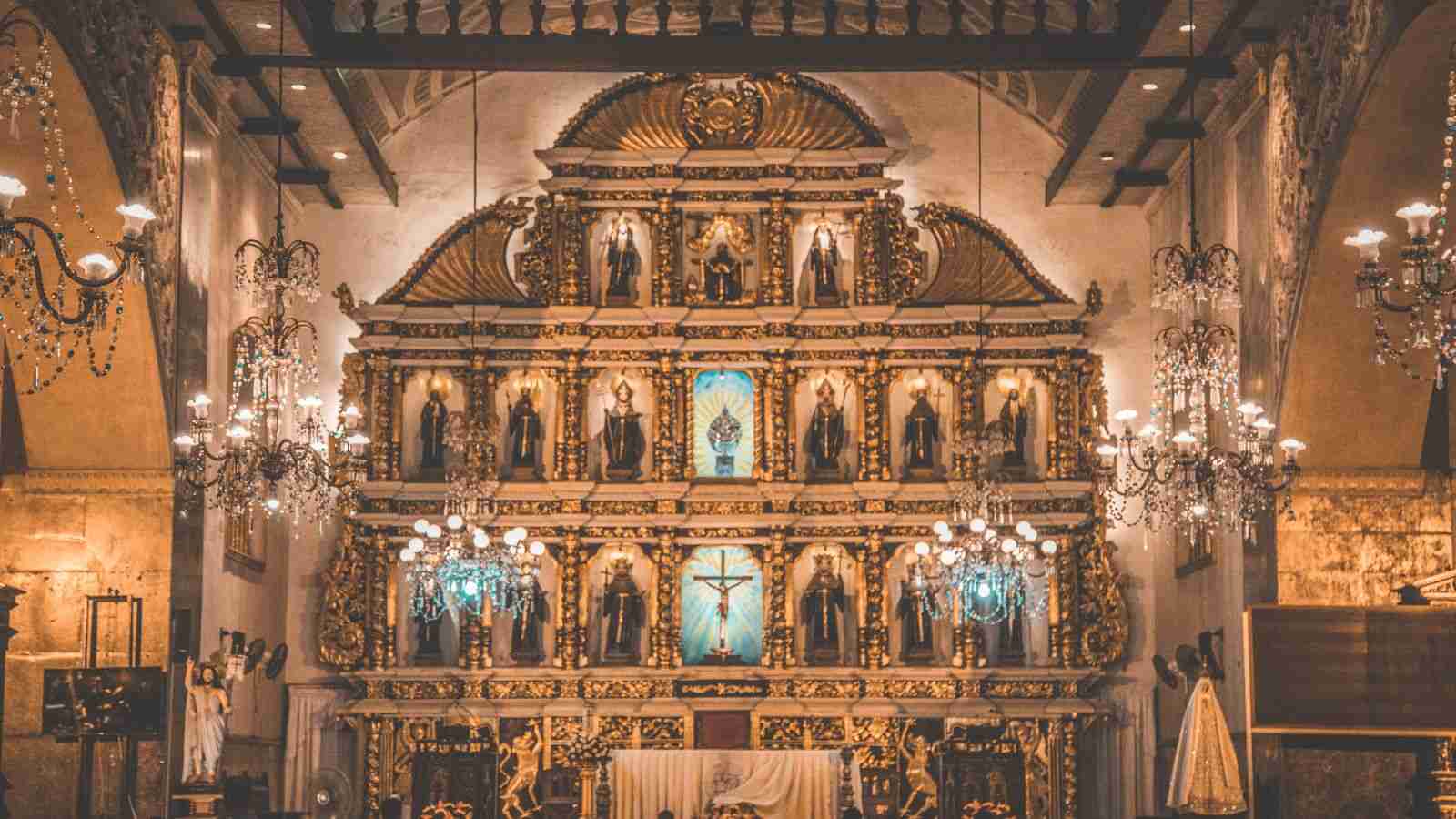
We visited this church in Cebu, and the interior, particularly the ceilings, chandeliers, and arches, are strikingly beautiful. Now, it’s among the top tourist destinations in Cebu. The iconic Magellan’s Cross Pavilion is also located next to this church.
The stunning basilica’s structure has been enhanced with marble and other construction materials. It has remained standing through the years and continued to be a testament to the resilience and faith of Cebuanos throughout centuries.
2. Santa Maria Church, Ilocos Sur (1567)
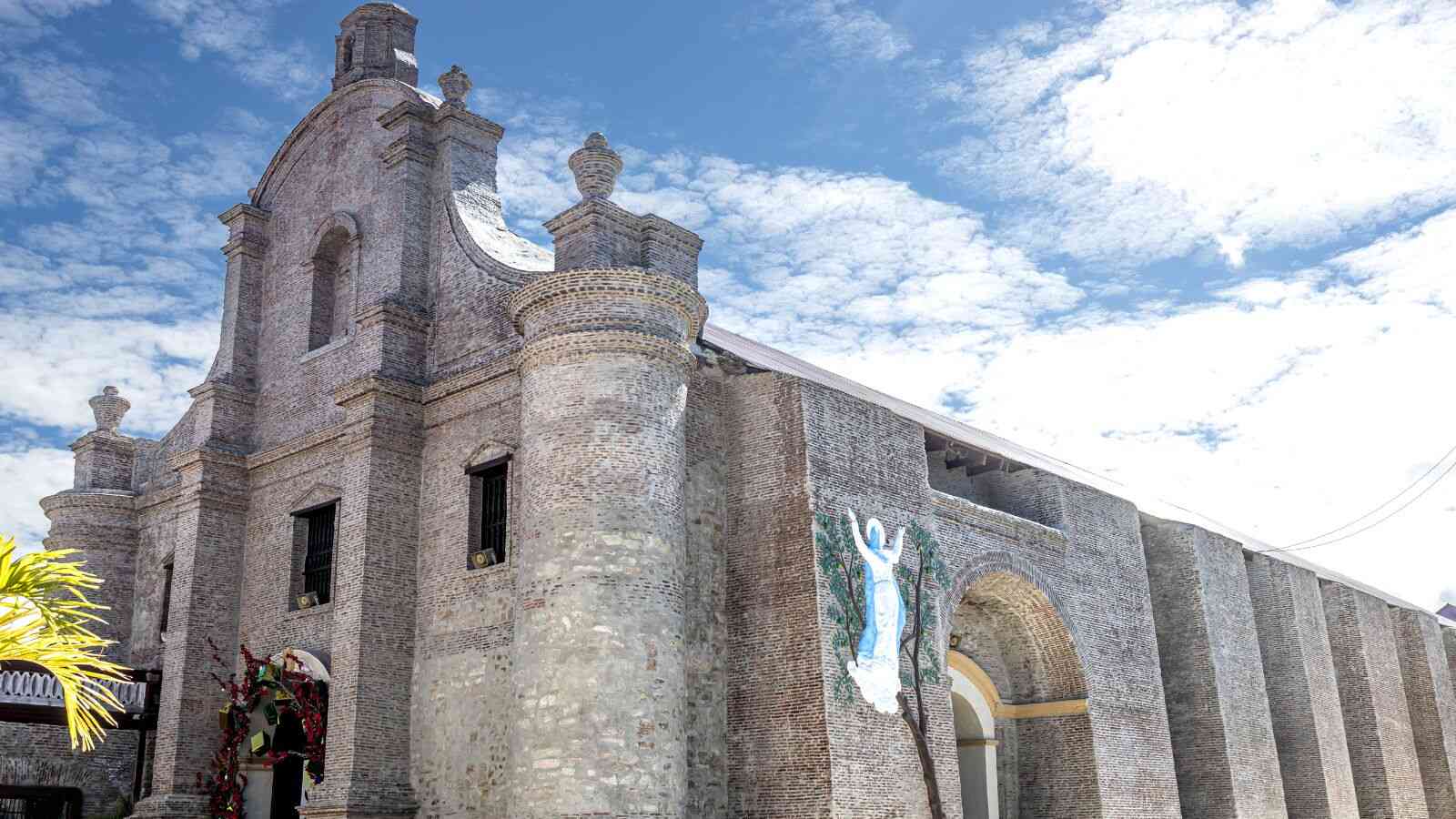
Santa Maria Church, also known as the Archdiocesan Shrine of Our Lady of the Assumption, was built in 1567 as a chapel of Narvacan, a neighboring town. The population of Santa Maria surged with the arrival of settlers following the complete conquest of the Ilocos Region by the Spaniards. Consequently, the chapel attained independent ministry status in 1769.
The beautiful church is situated in a strategic location, on a hill, like a fortress. That provides a picturesque view and also symbolizes strength and resilience.
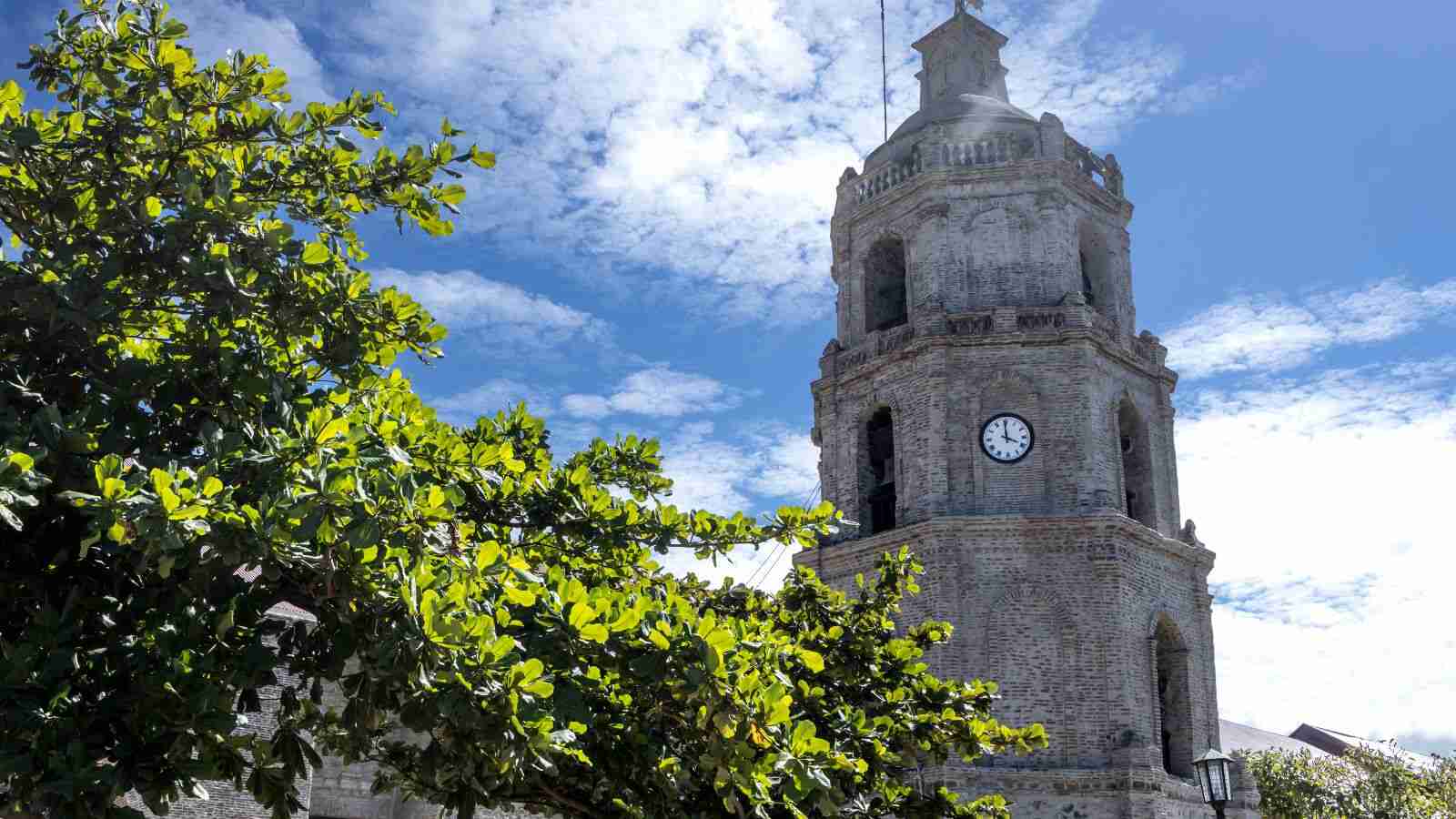
It was designated as a UNESCO World Heritage Site in 1993 among the Baroque Churches of the Philippines. Santa Maria Church was also among the filming locations of a popular Filipino Netflix series, “Maria Clara at Ibarra.”
Walking in the surroundings of Santa Maria Church is like entering a time capsule. It is a fascinating journey back in time.
3. Manila Cathedral in Intramuros, Manila (1571)
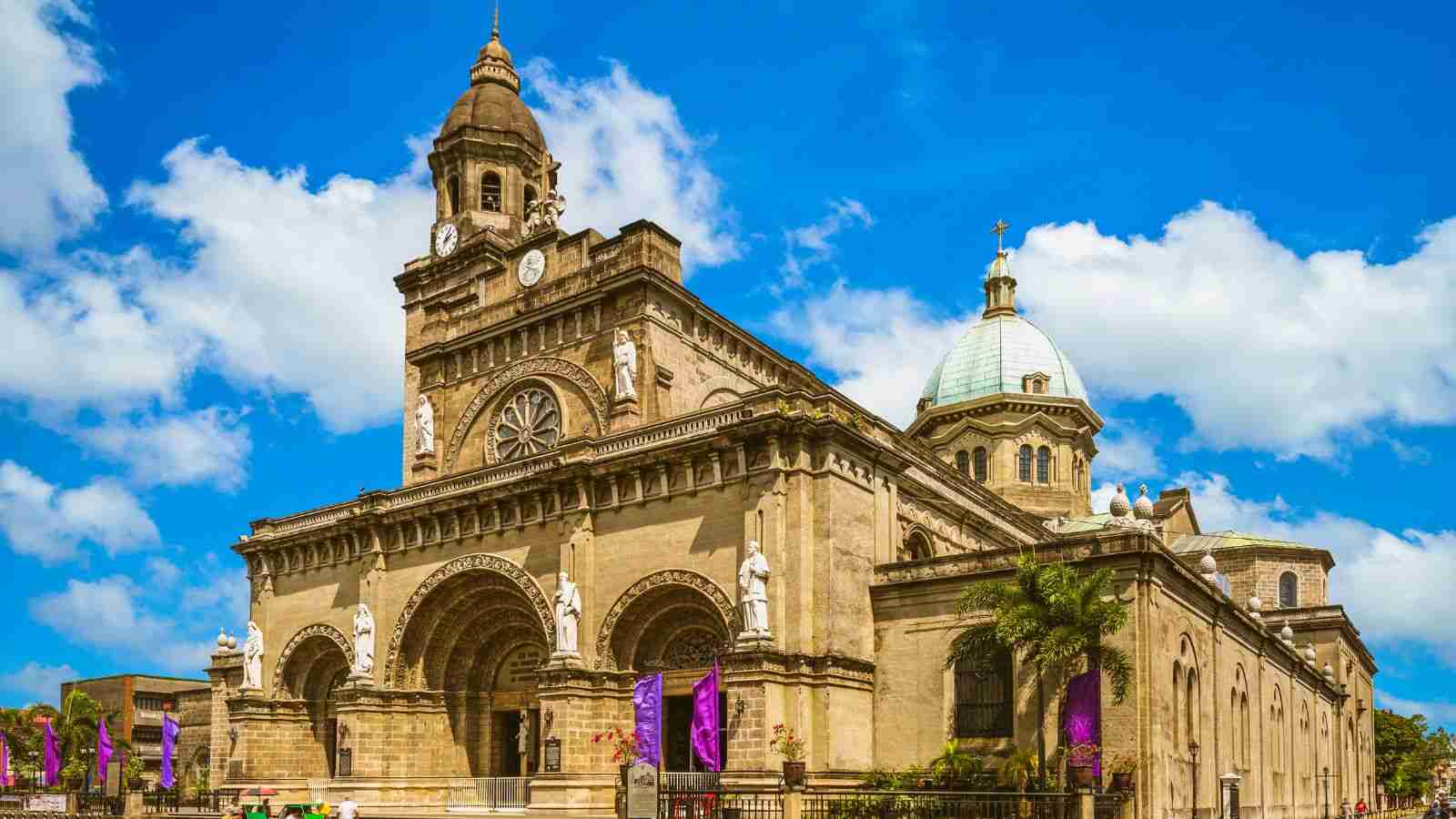
The Manila Cathedral, also called the Cathedral-Basilica of the Immaculate Conception, is an important and historic church located in the ancient walled city of Intramuros. It is The Mother of all Churches, Cathedrals, and Basilicas of the Philippines. It has hosted major religious events, such as papal visits and beatification.
The cathedral was originally constructed in 1571 as a parish church under the Archdiocese of Mexico. Later, it became its own diocese after a decision by Pope Gregory XIII.
Between 1581 and 1958, the cathedral underwent multiple reconstructions due to damage from wars, fires, typhoons, and earthquakes.
It features a Neo-Romanesque style reminiscent of Romanesque Revival architecture. Notable features include a dome-shaped ceiling, stained glass windows, intricate mosaics, symbolic representations, marble floors, and columns.
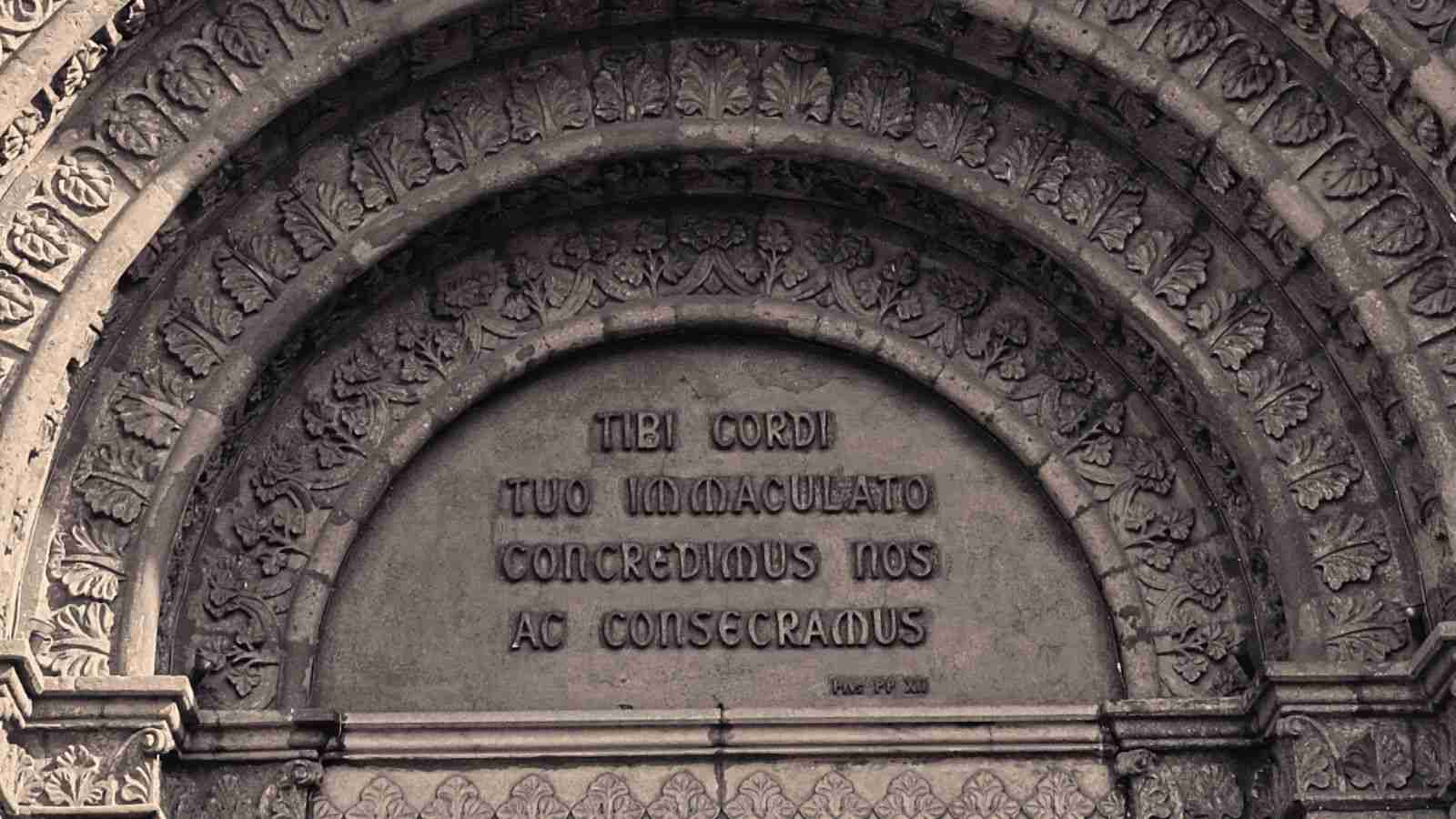
Above the entrance doors of Manila Cathedral, bears the Latin inscription Tibi cordi tuo immaculato concredimus nos ac consecramus (“To thy Immaculate Heart, entrust us and consecrate us”).
4. San Agustin Church in Intramuros, Manila (1571)
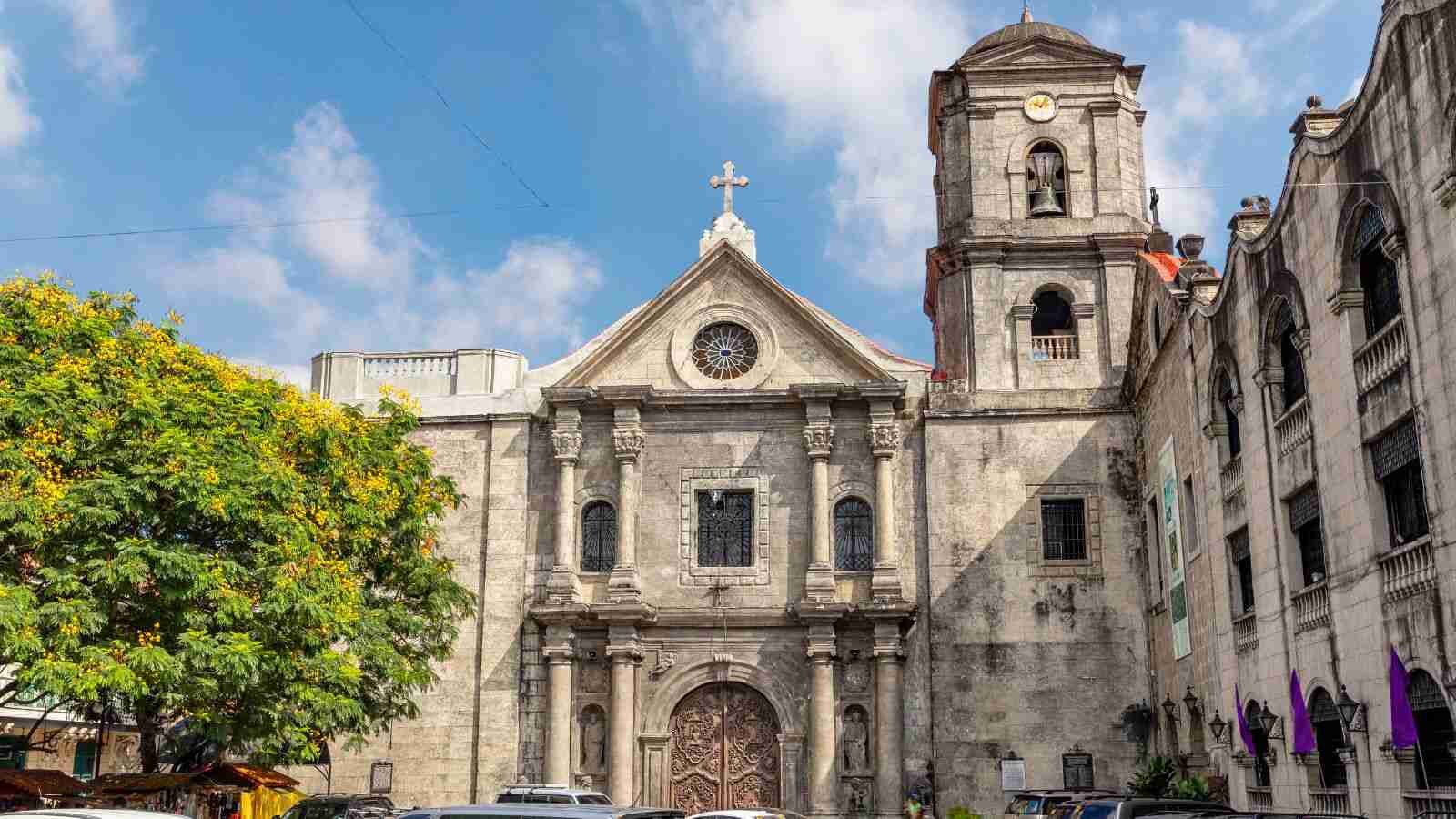
San Agustin Church of Intramuros, Manila, is among the oldest stone churches in the Philippines. It boasts a rich history dating back to 1571. Designated a UNESCO World Heritage Site in 1993, this architectural marvel offers a glimpse into the country’s colonial past.
The church’s unique Neoclassical-Baroque architecture sets it apart from other historical buildings. Its artistic designs showcase a blend of European and local influences. The stunning facade and interior of San Agustin Church are living proof of the craftsmanship of its builders.
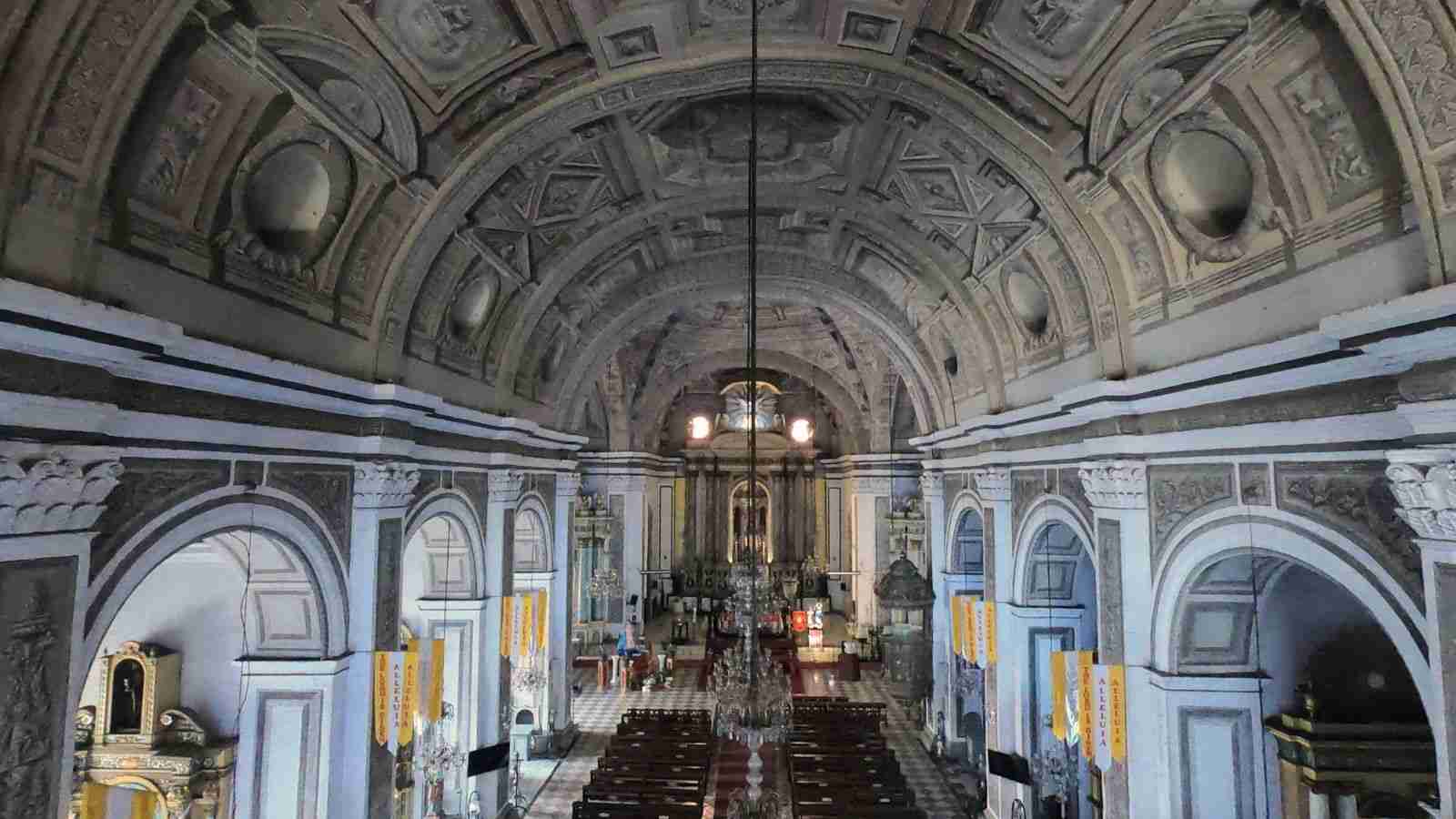
It’s also known as the Church of Immaculate Conception of San Agustin, Archdiocesan Shrine of Our Lady of Consolation and Cincture.
Maintaining its original form, the church has withstood the test of time, surviving wars, natural disasters, and various challenges throughout centuries. It continues to symbolize resilience and cultural heritage for generations to come.
5. San Gregorio Magno Parish, Majayjay, Laguna (1571)
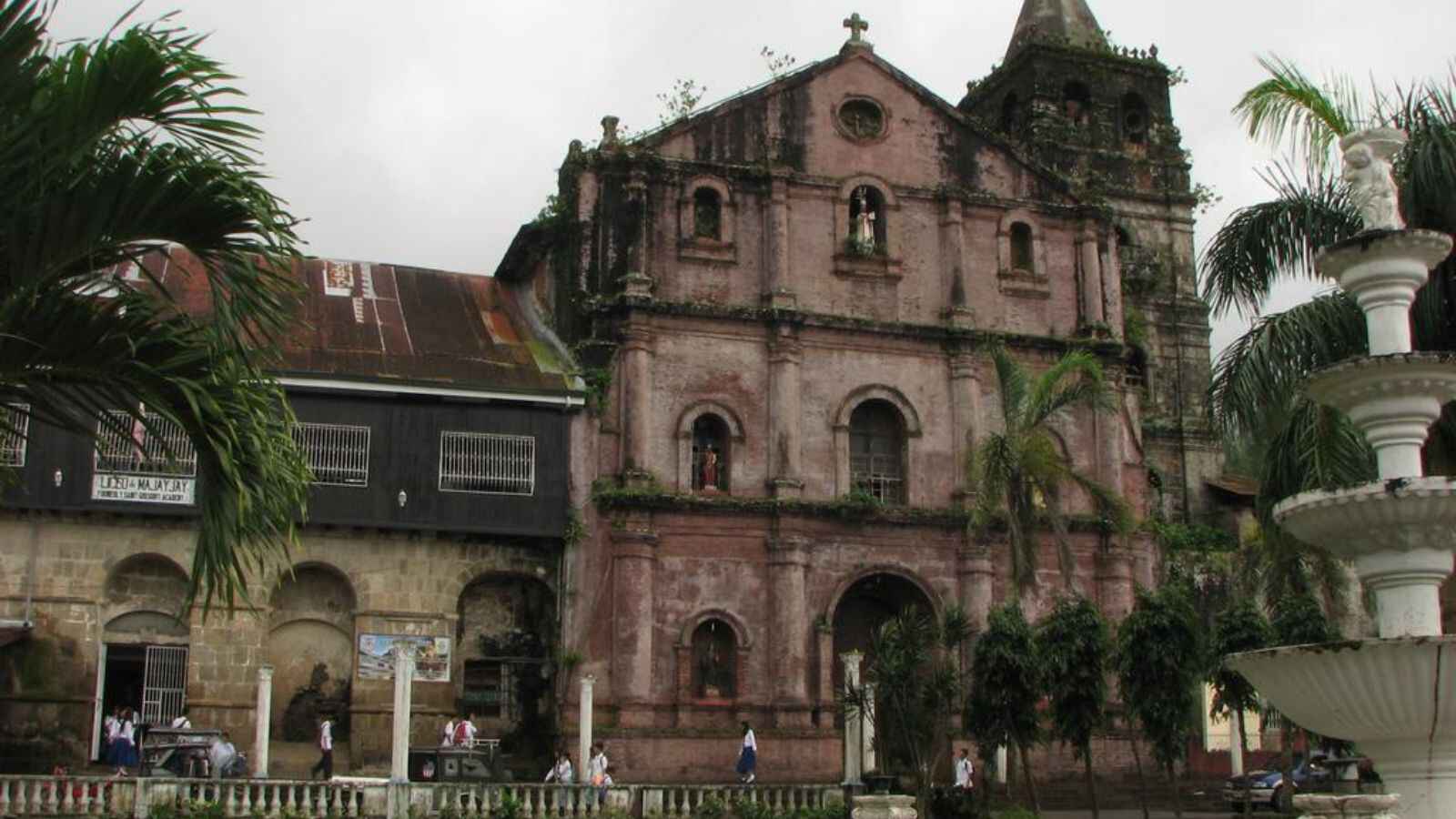
San Gregorio Magno Parish Church was founded in 1571 by Augustinian missionaries. It was first constructed of nipa and bamboo. Over the years, it was damaged by fire, war, and typhoons and rebuilt stronger. There was a time in 1730 when it emerged as the biggest church in the Philippines.
The interior of this 16th-century old church is adorned with a retablo mayor and four smaller retablos, all crafted with artistic designs. The floor is covered in beautifully tiled azulejo, and the red-brick walls have been carefully preserved, although some modifications have been made.
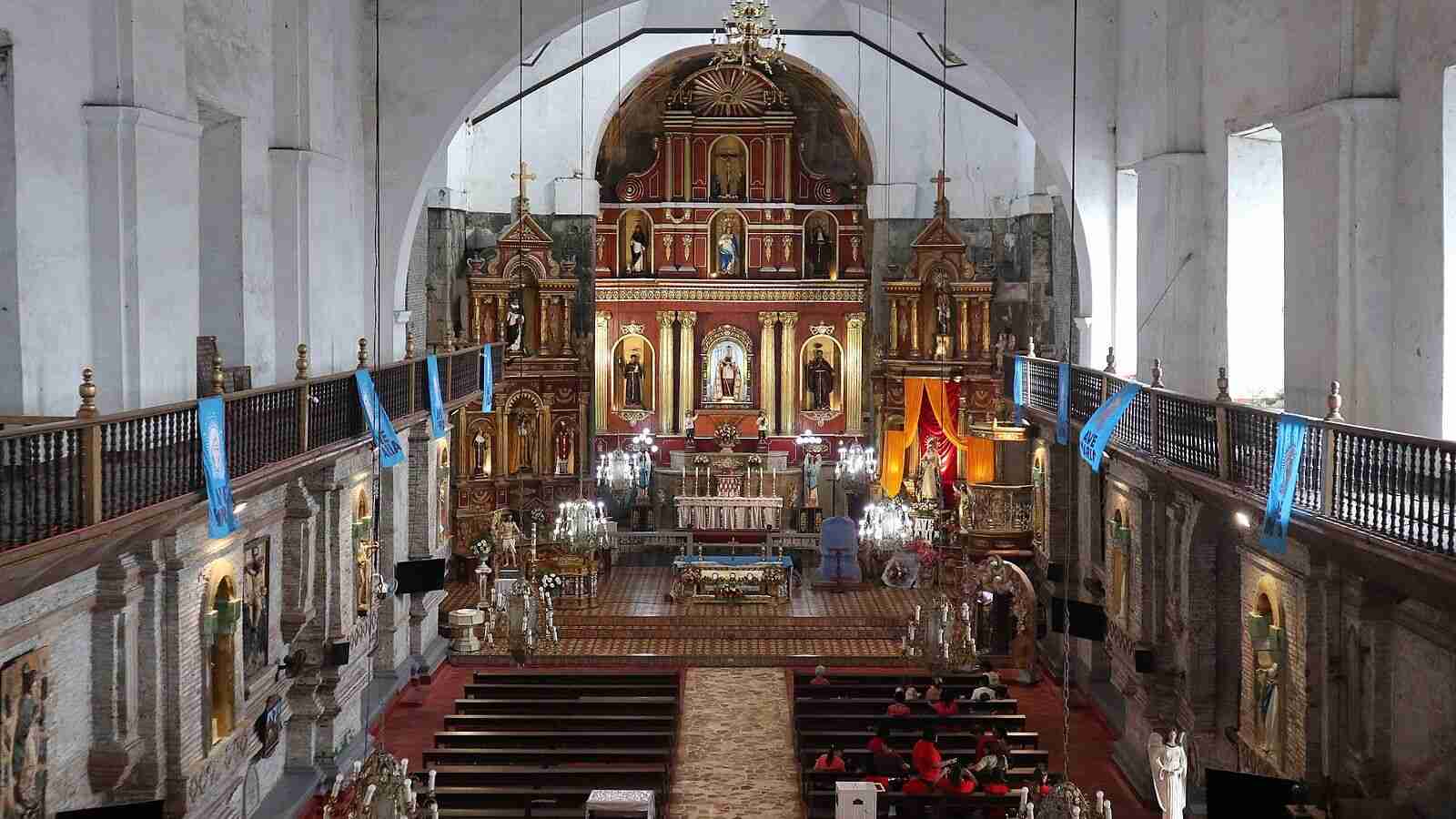
San Gregorio Magno Parish has overcome natural calamities, political changes, and societal transformations while remaining a symbol of faith in Majayjay. It continues to preserve traditions and foster a sense of belonging among its parishioners.
6. Church of Lubao, Pampanga (1572)
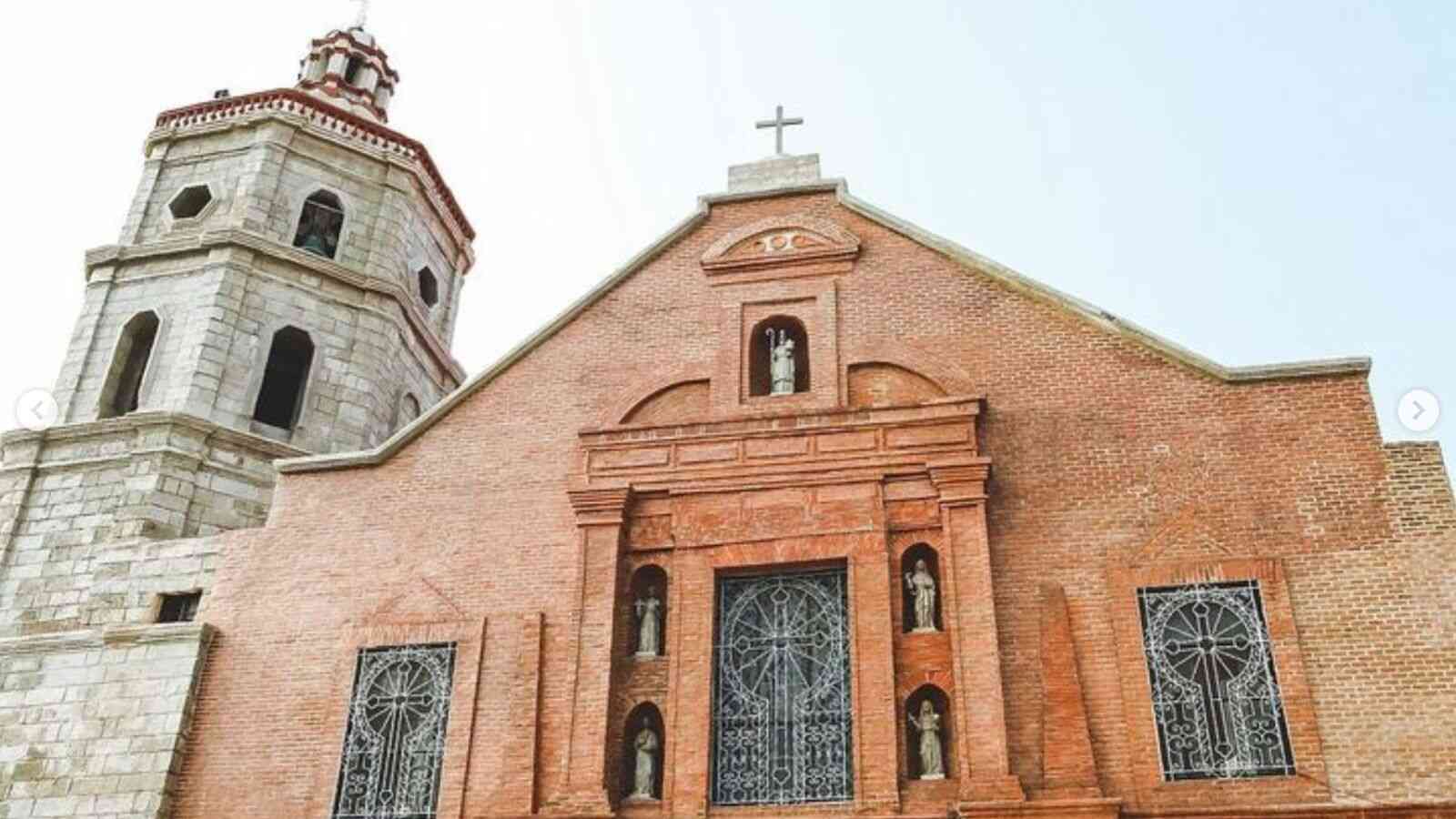
The Church of Lubao was founded in 1572 in Santa Catalina and moved thirty years later due to floods. The church in its current location in San Nicolas 1st, Lubao, was constructed in 1614 and made from locally produced brick and sand mixed in egg albumen contributed by the people of Lubao.
It is now called San Agustin Parish Church and is recognized by the National Museum of the Philippines as an Important Cultural Property. The fifth president of the Philippines, Diosdado P. Macapagal, was baptized in this Neoclassical-style church.
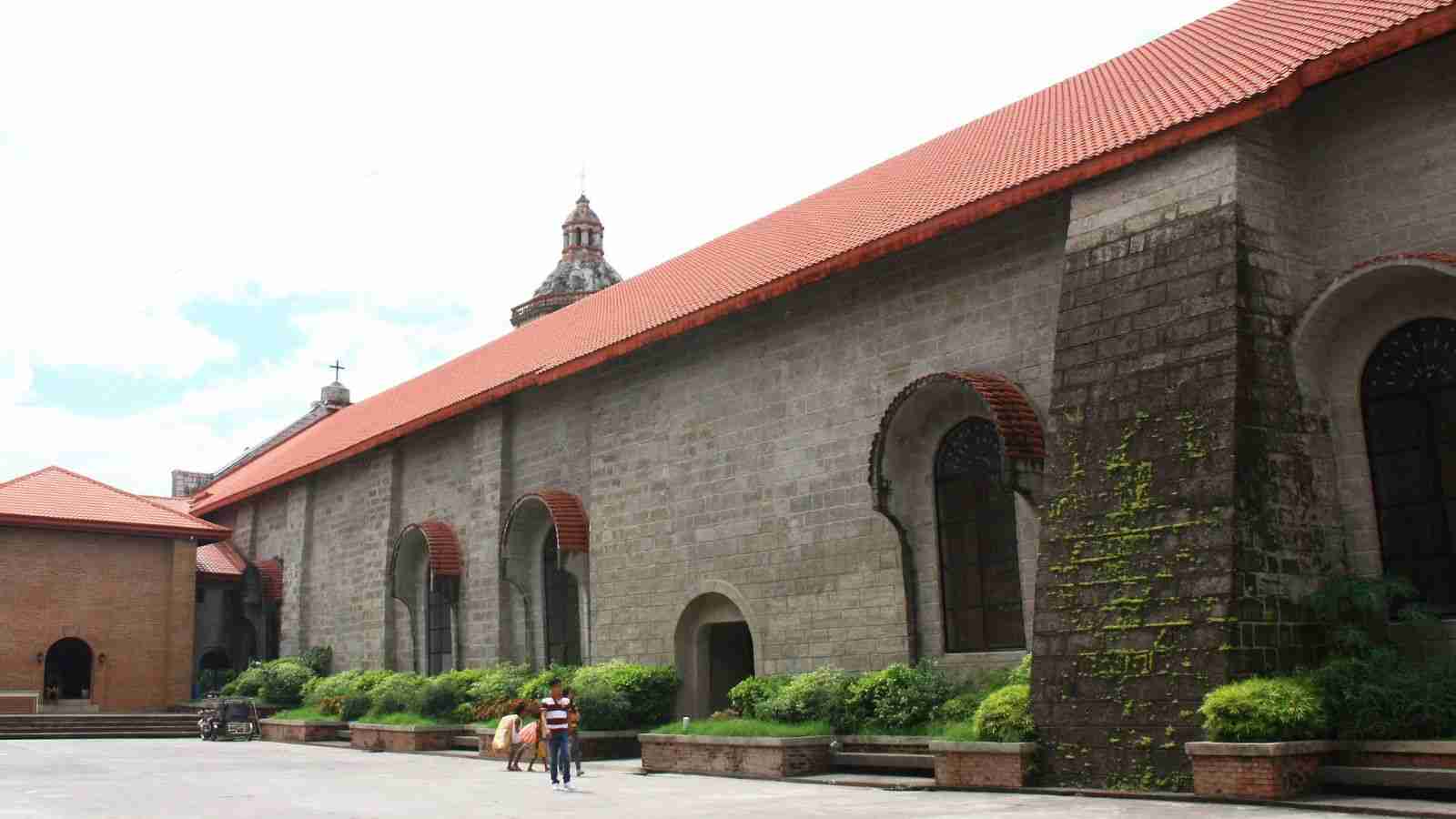
San Agustin Church has also survived many calamities. Yet a strong earthquake in 2019 wrecked its façade and bell tower. The locals’ strong faith and unity rebuilt the damaged structure.
7. Church of Bulakan, Bulacan (1575)
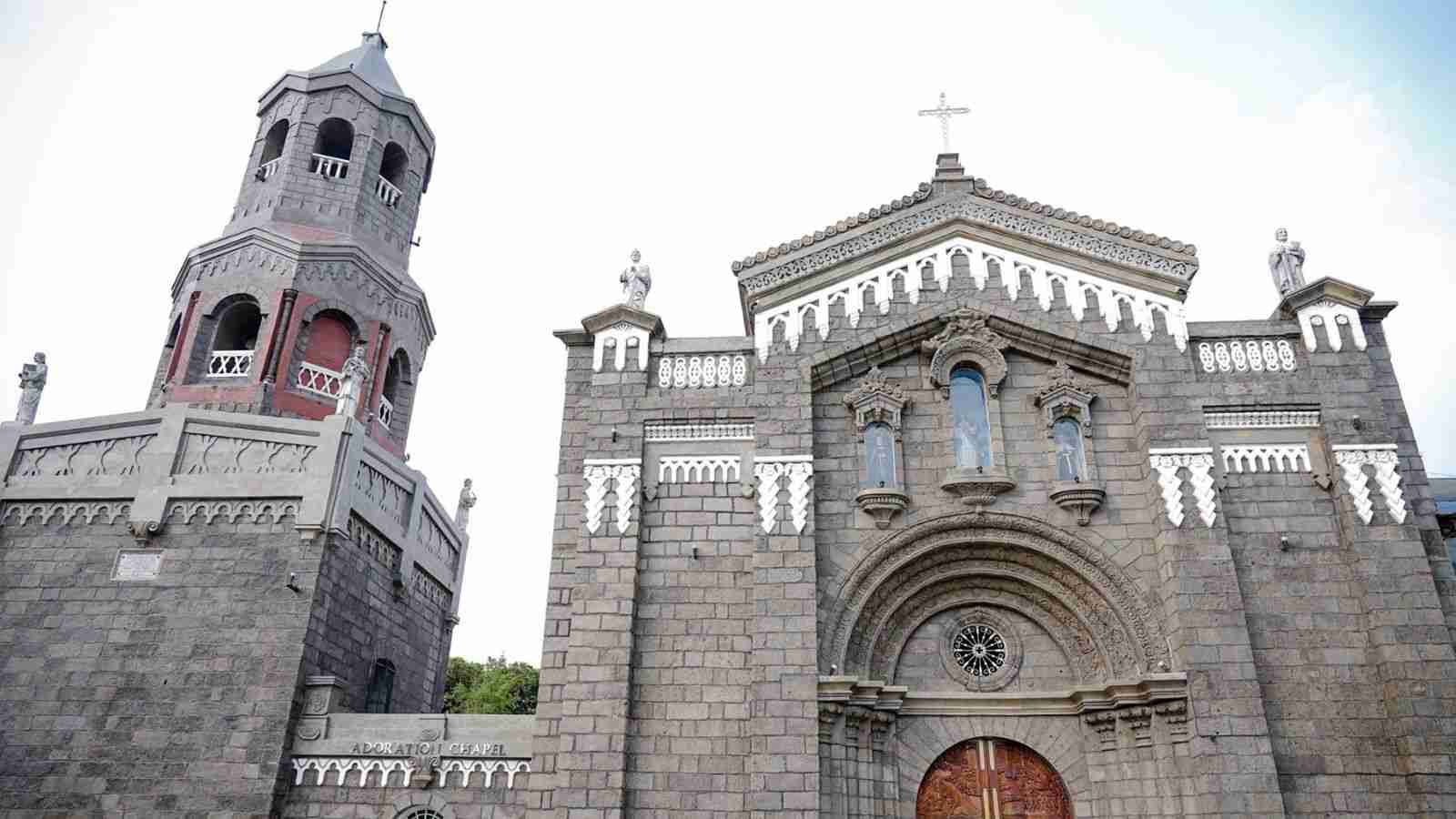
The Church of Bulakan was established in 1575 by Augustinian friars. In 1578, the parish church and convent were built under the patronage of Nuestra Señora de la Asuncion. In 1762, the church was burnt and invaded by English conquerors. Then, it was reconstructed and damaged again by earthquakes in 1863, 1869, and 1880.
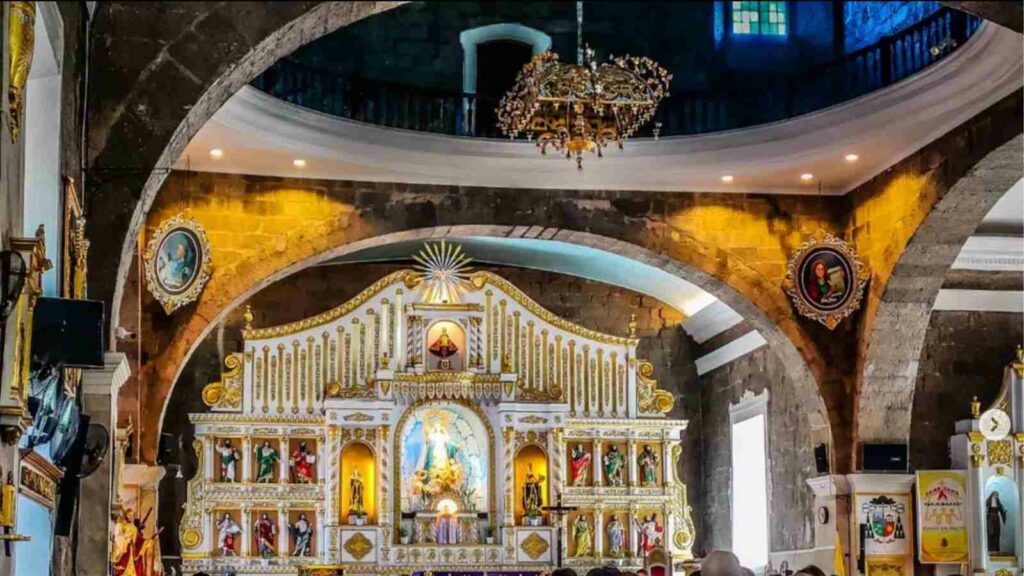
Eventually, the church was repaired, and major renovations were made for its Neo-Byzantine style. The bell tower was finished in 1889. It was the place where Gregorio del Pilar secretly handed out the pamphlets written by his uncle, Marcelo H. del Pilar, during their propaganda against the Spaniards.
The Church of Bulakan is not only a sacred place of worship, hope, and faith. It’s fascinating to know that those walls have witnessed many secrets of our heroes in the past.
8. Quipayo Church, Camarines Sur (1578)
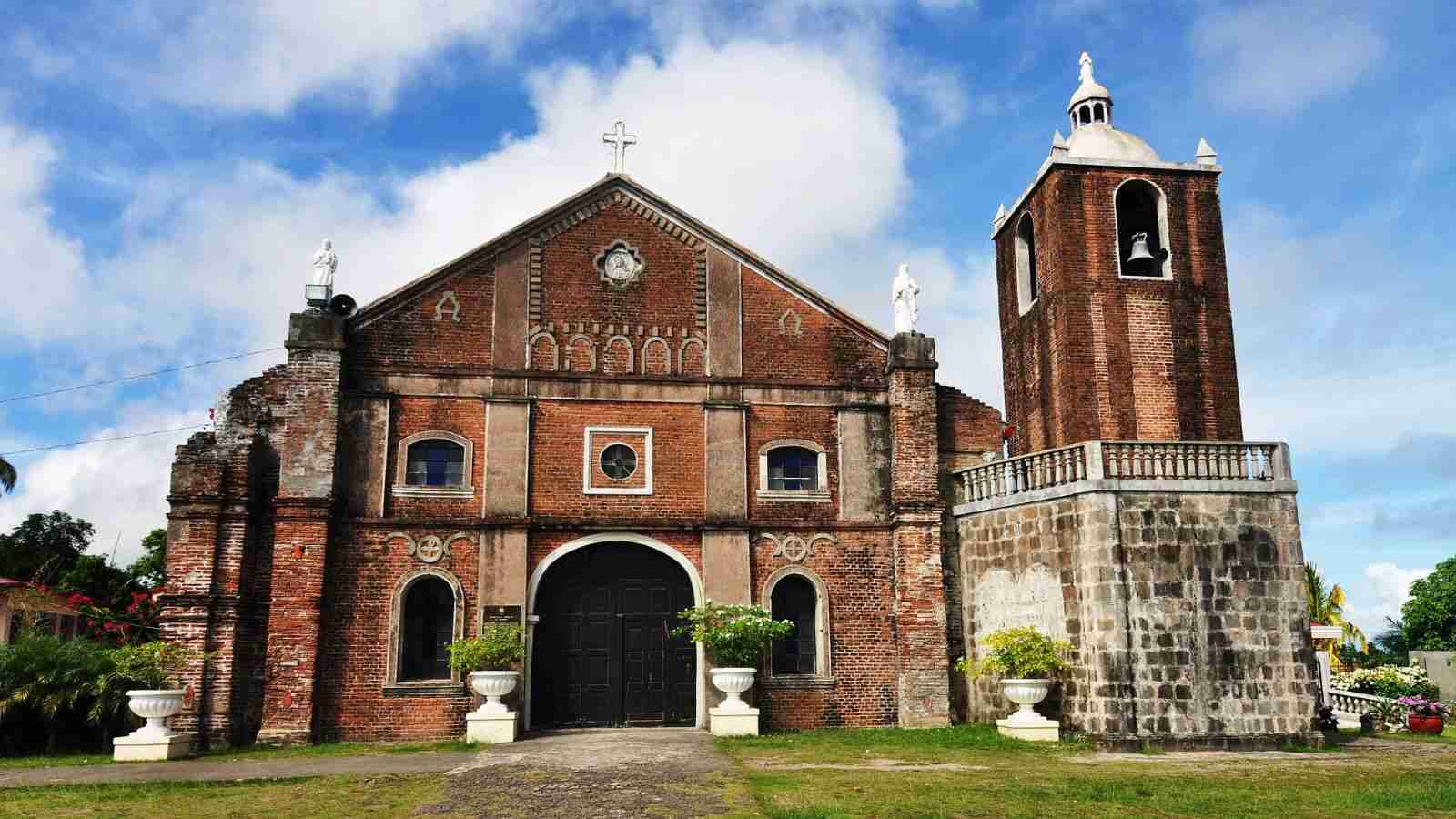
Quipayo Church was built in 1578 by Franciscan priests Fr. Pablo de Jesus and Bartolome Ruiz. It’s one of the oldest churches in the Bicol region and the Philippines. The original structure, which was made of nipa and wood, was soon replaced by brick.
Our Lady of the Immaculate Conception is its patron saint. In 1659, St. Roque became the second patron saint of Quipayo Church.
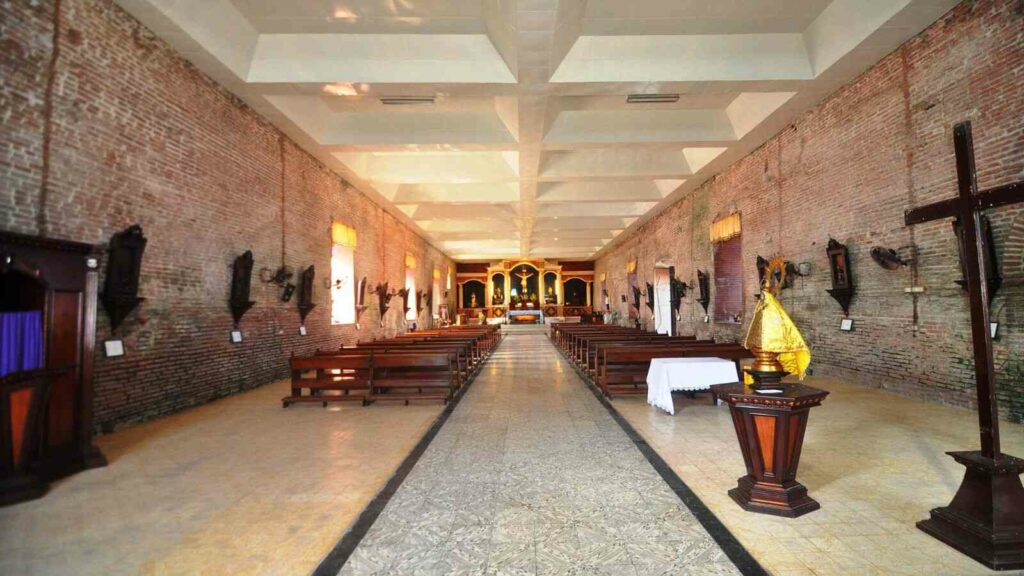
Despite its age, this architectural masterpiece continues to draw devotees, locals, and church enthusiasts who adore its beauty.
9. Pililla Church, Rizal (1583)
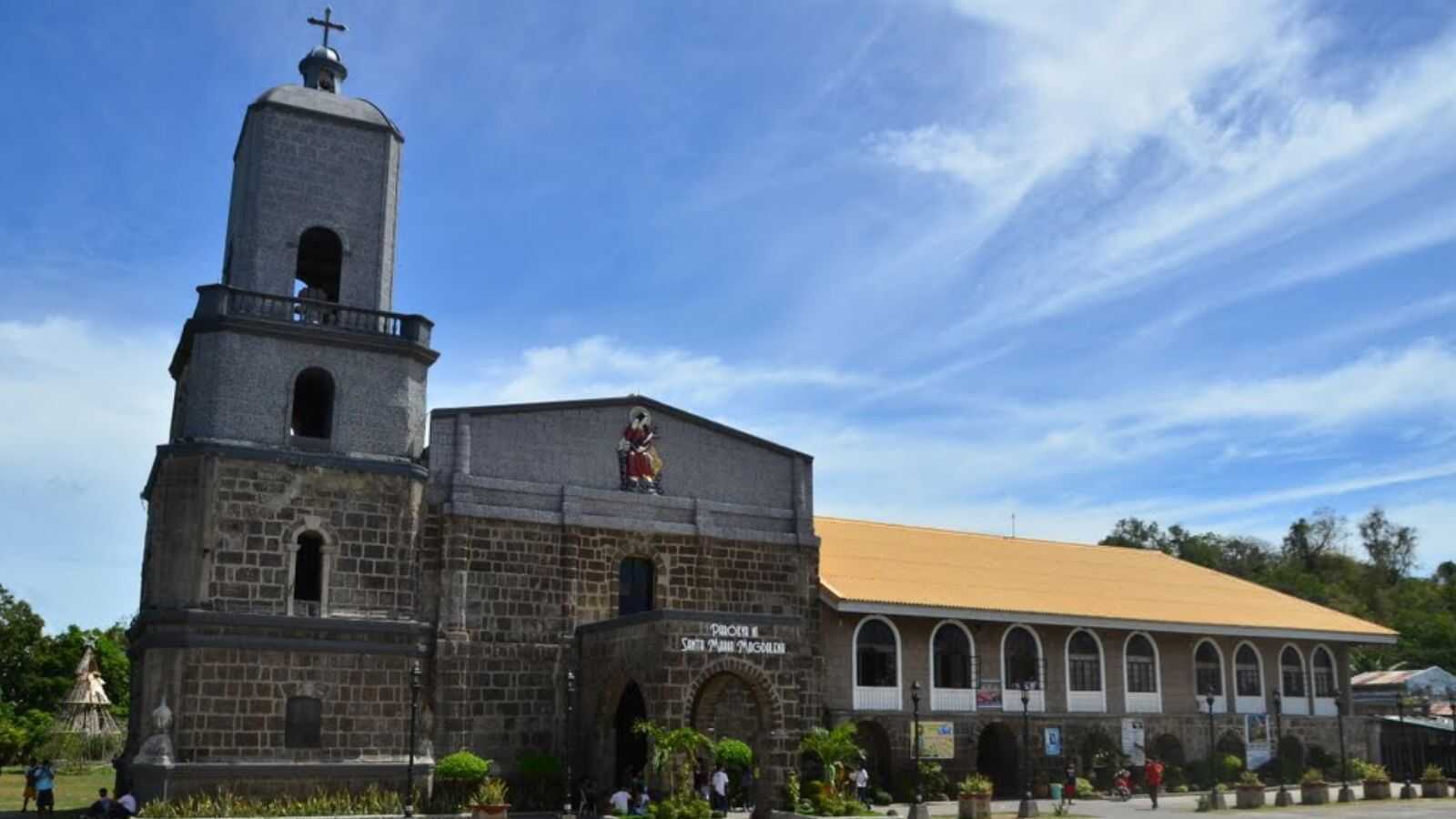
Franciscan friars arrived in Pililla, Rizal, in 1572. In 1583, they built the church of Pililla, made from bamboo and cogon, under the patronage of St. Mary Magdalene.
Eventually, the church was constructed in stone, but it was destroyed by fire in 1632. It was rebuilt, and the altar and convent were renovated. At present, it features an adobe structure with a simple design.
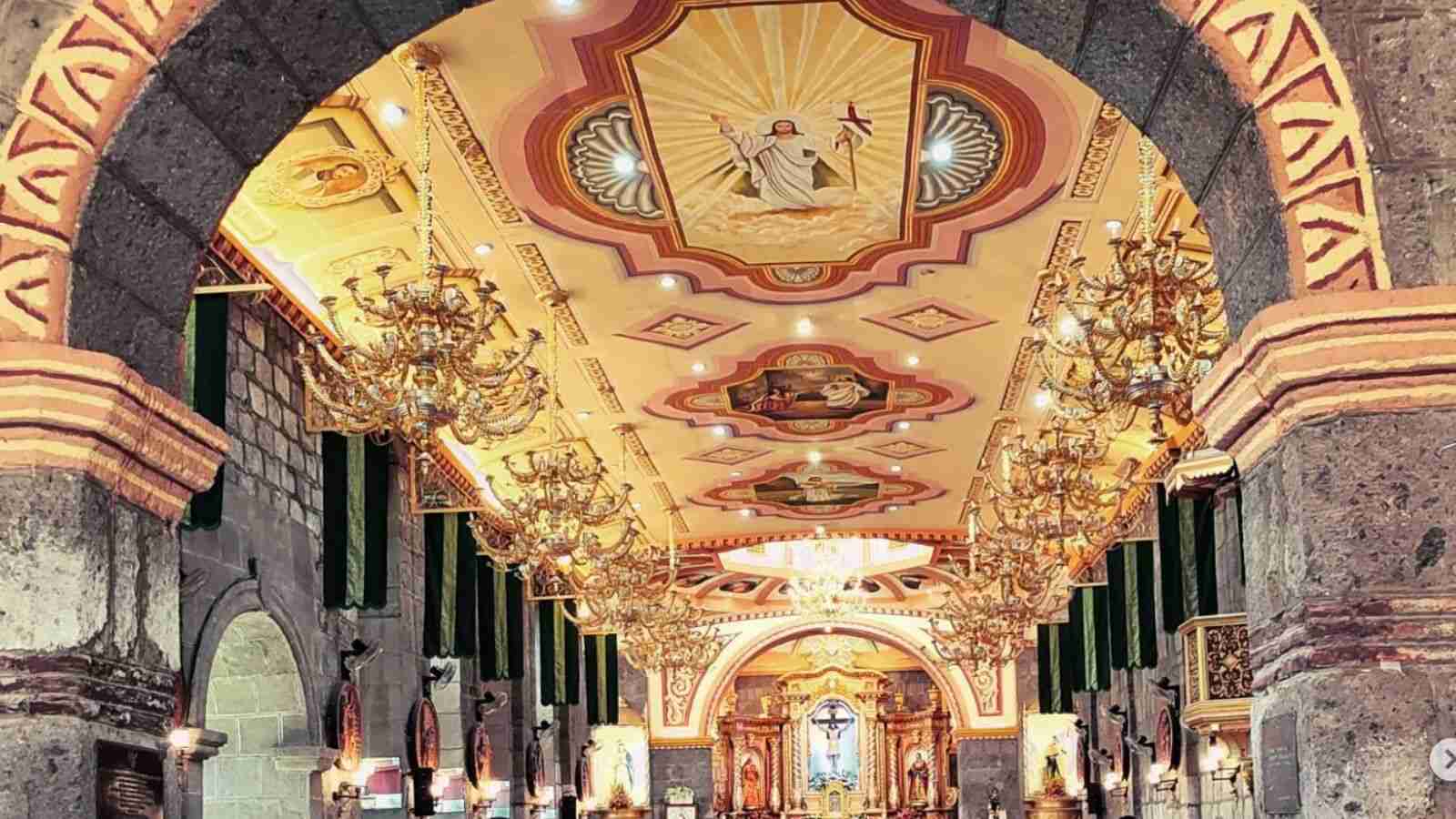
The interior of St. Mary Magdalene church reflects the Spanish-Filipino era, with intricate paintings on its ceilings and beautiful flooring. The vintage chandeliers also complement the overall interior design.
10. San Nicolas Church, Ilocos Norte (1584)
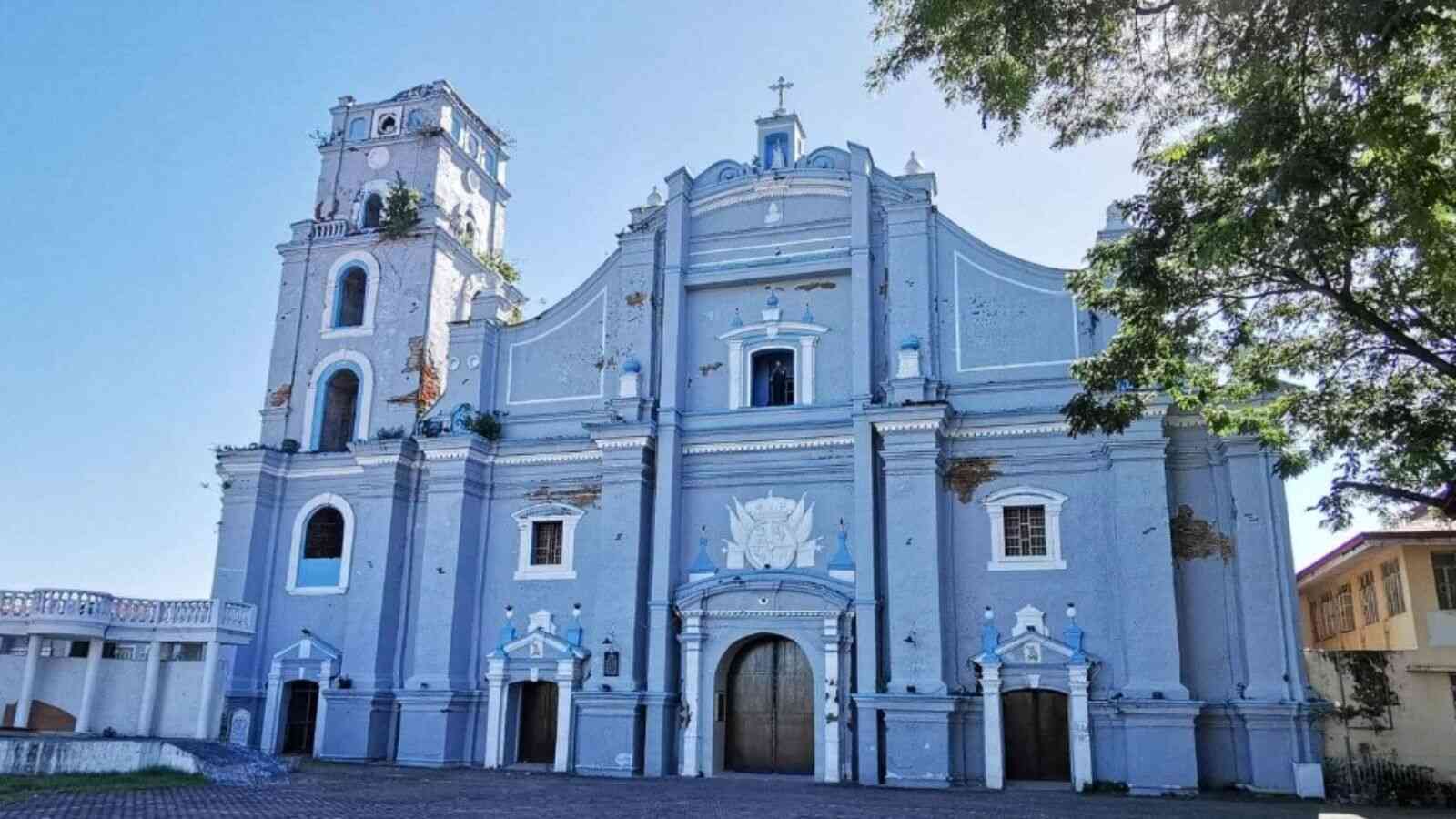
The Church of San Nicolas, also known as San Nicolas de Tolentino Parish, in Ilocos Norte, was established in 1584 by Augustinian missionaries and constructed in the same year. The original chapel was of masonry with a thatch roof.
With its Baroque-style facade, the church proudly displays the Spanish coat of arms. Adjacent to it on the right side, a three-story bell tower was constructed by Father Vitoriano Garcia.
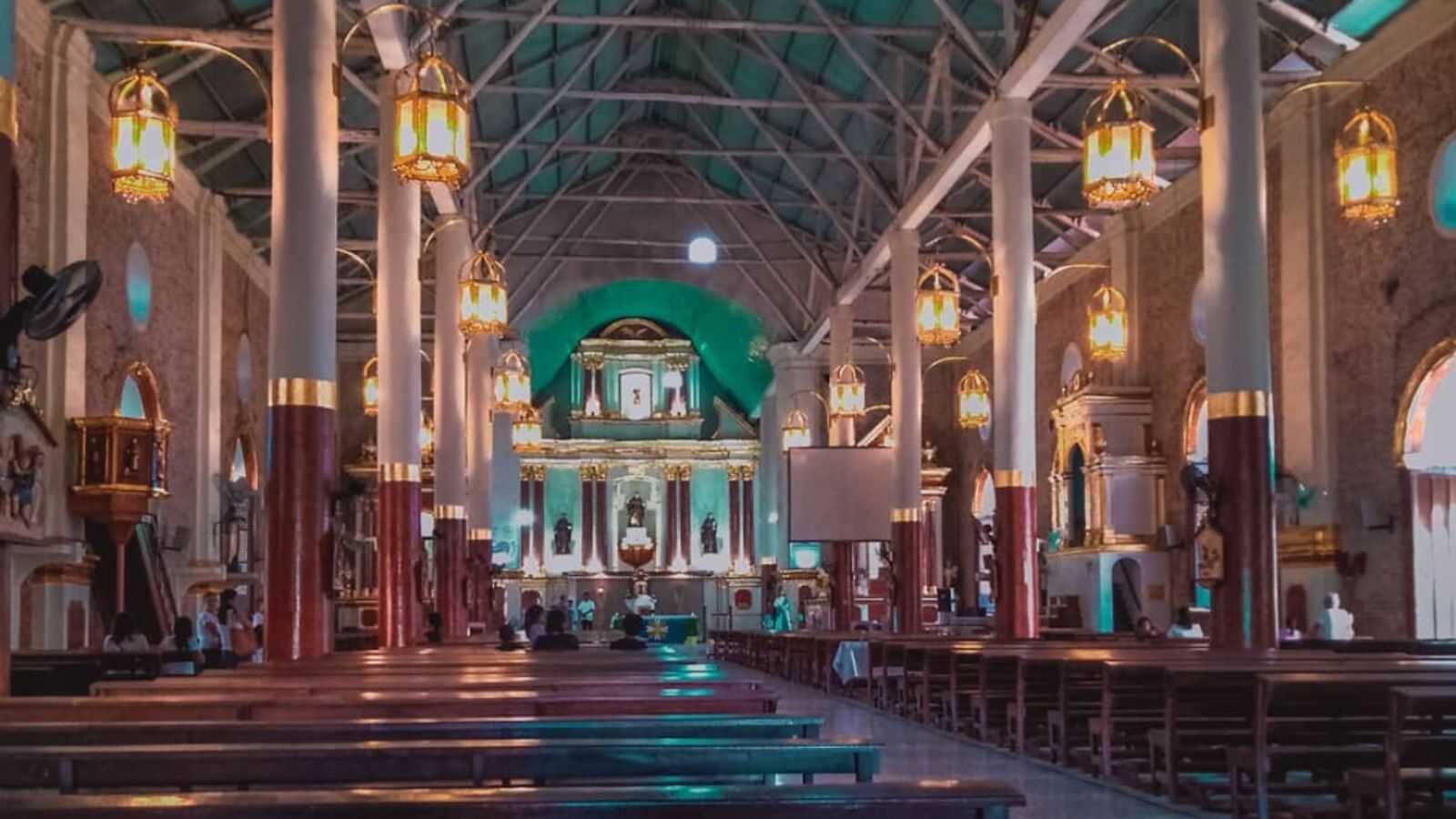
The interior of San Nicolas has a charming aesthetic accentuated by its towering pillars, while modern lanterns gracefully hang from each column.
It is a must-visit if you want to see a traditional Filipino church and experience the warmth and friendliness of the people in San Nicolas, Ilocos Norte.
11. Cagsawa Church, Albay (1587)
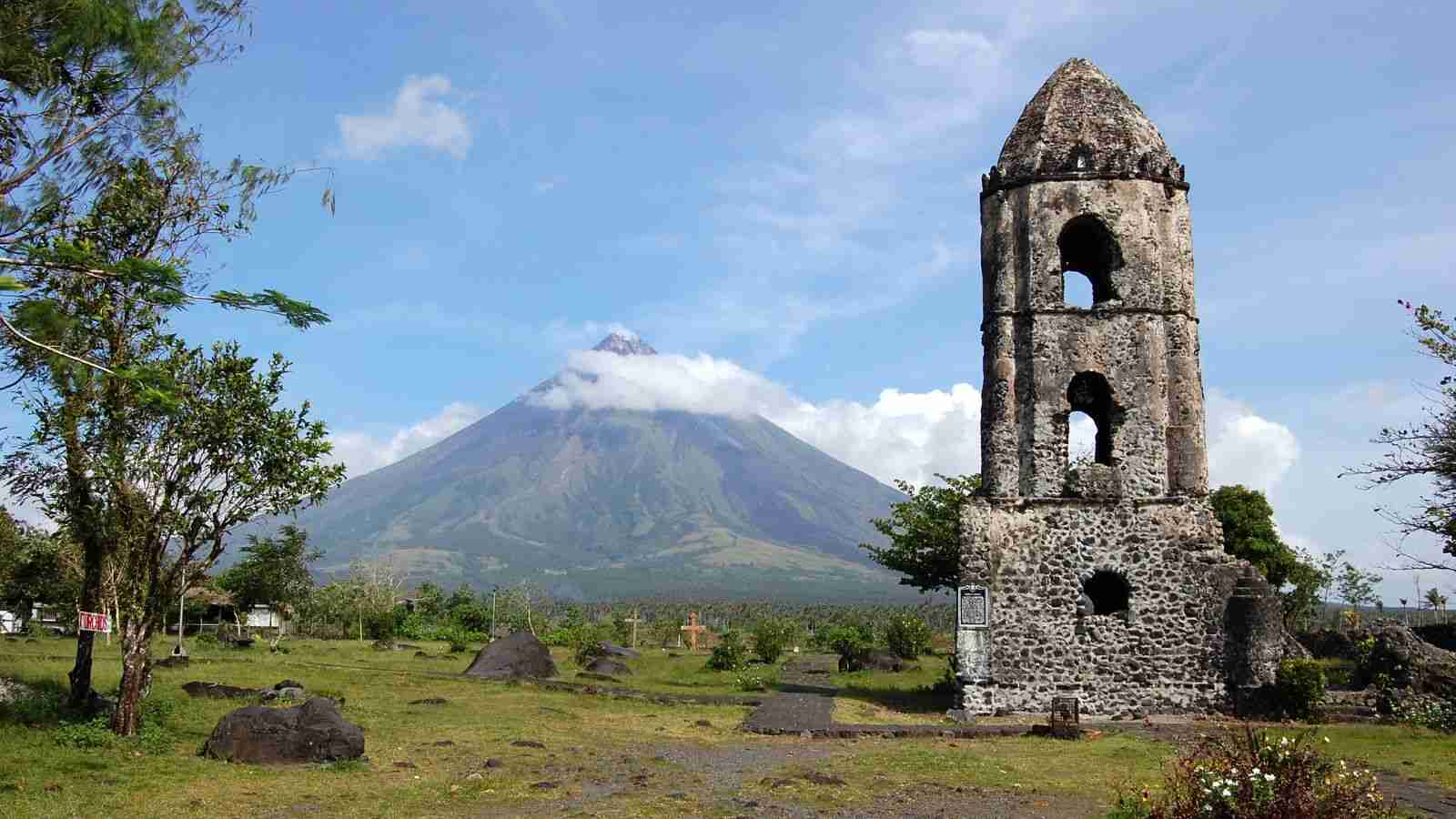
The Cagsawa Church was constructed in 1587 by Franciscan friars to spread Christianity across Albay. It served as a spiritual haven for the local community in the Spanish era.
The church’s fate took a dramatic turn in 1814 when the cataclysmic eruption of Mount Mayon, an active volcano looming in the backdrop, engulfed the region in a devastating natural disaster.
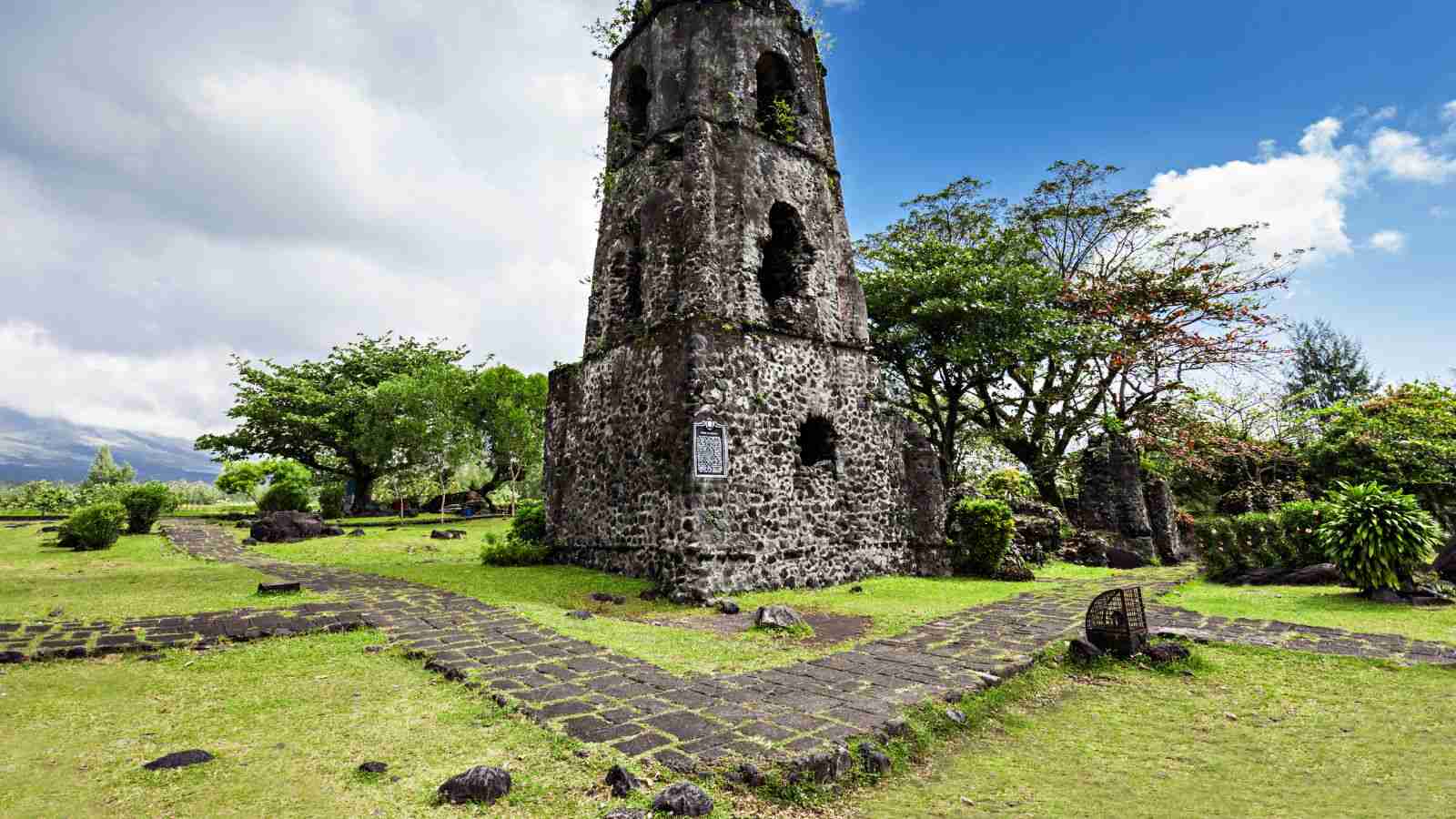
Despite its solid façade, the volcanic eruption destroyed the church, leaving only its beautiful ruins. Today, the haunting remnants of Cagsawa Church attract visitors here and abroad, drawing them into a memorable historical narrative that inspires solemn reflection.
The weathered stone walls, standing still against the backdrop of Mount Mayon’s majestic view, serve as a symbol of resilience, testifying to the enduring spirit of the Filipino people in the face of adversity.
12. Bantay Church, Ilocos Sur (1590)
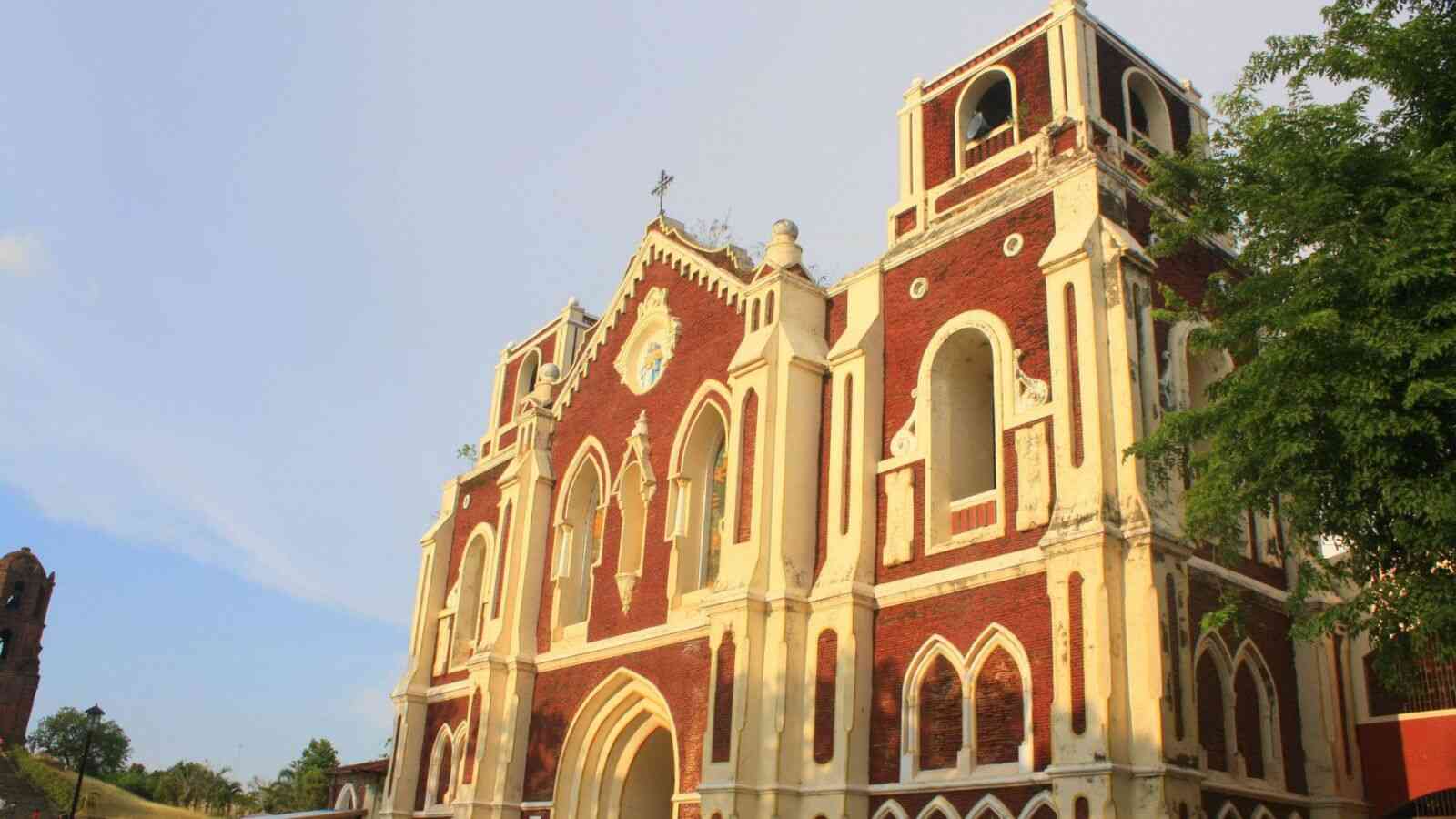
Bantay Church, also known as the Shrine of Our Lady of Charity St. Augustine Parish Church, is one of the oldest churches in the Ilocos region. It was built in 1590 and was named after St. Augustine, the patron saint, by the Augustinian friars.
The church suffered major damage during World War II, prompting reconstruction efforts that started in 1950. The restored façade blends Neo-Gothic design with pseudo-Romanesque elements and materials, aiming for a splendid style of Spanish architecture. It incorporates materials like bricks and mud to achieve this aesthetic.
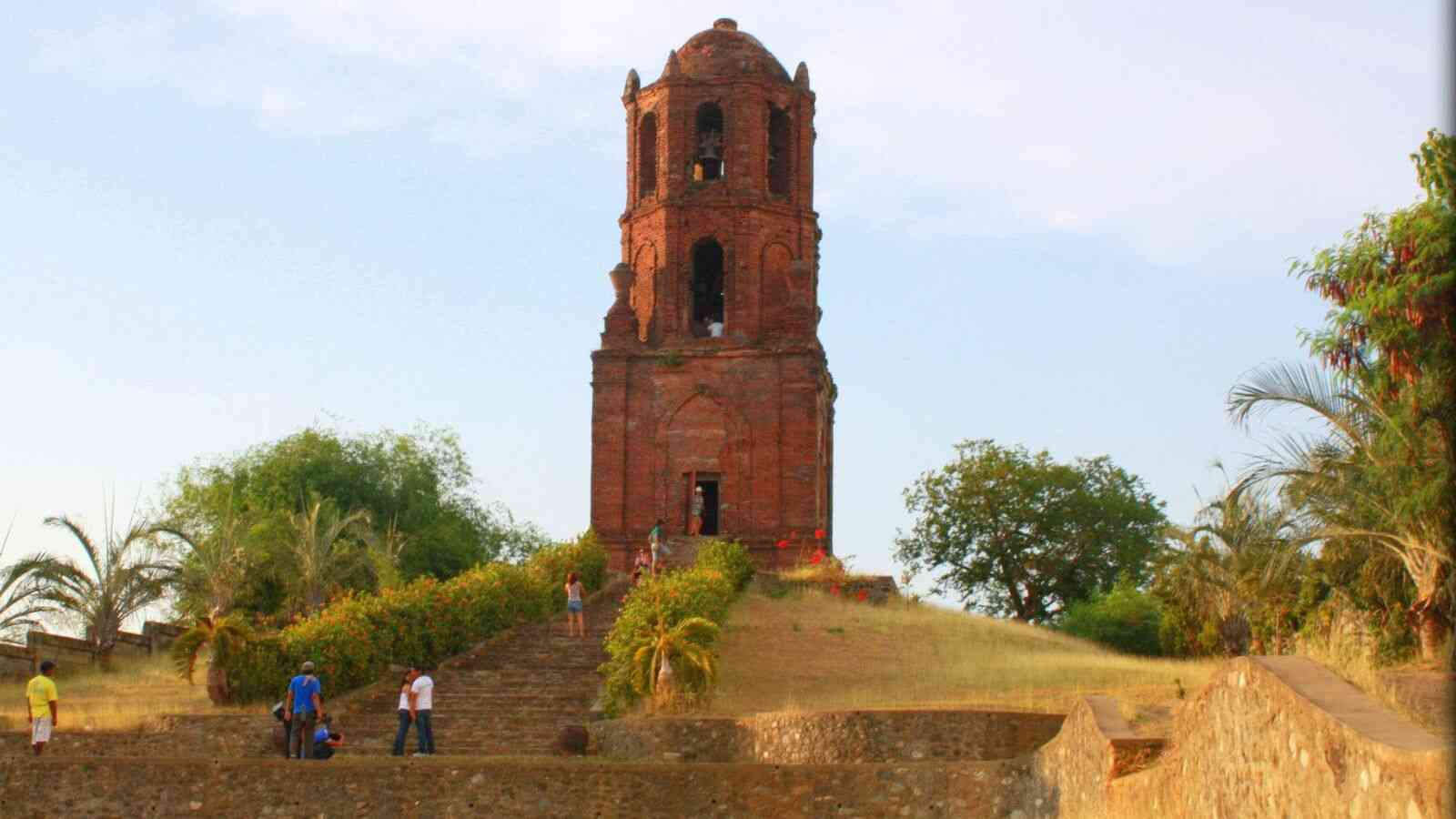
The famous belfry of the church, known as Bantay Tower, once served as a watchtower for pirates during the Spanish invasion. It bestowed the town its name, “Bantay,” (meaning “to guard” in Filipino).
13. Paoay Church, Ilocos Norte (1593)
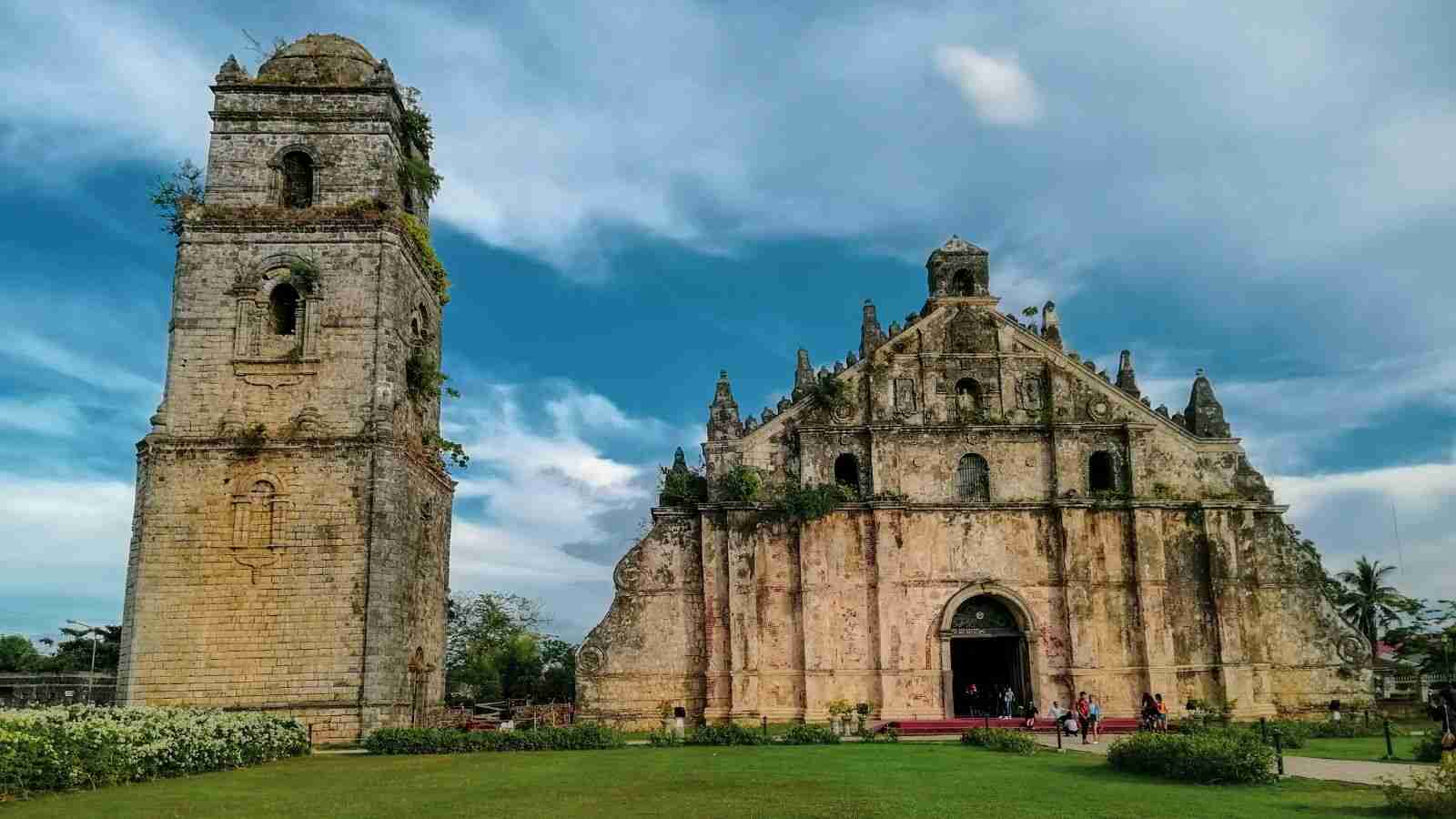
The Church of Paoay in Ilocos Norte was founded by Augustinian missionaries in 1593. It is one of the oldest churches and one of the most popular tourist spots in Ilocos and the Philippines.
It features a remarkable blend of European Baroque and Filipino earthquake-resistant architecture.
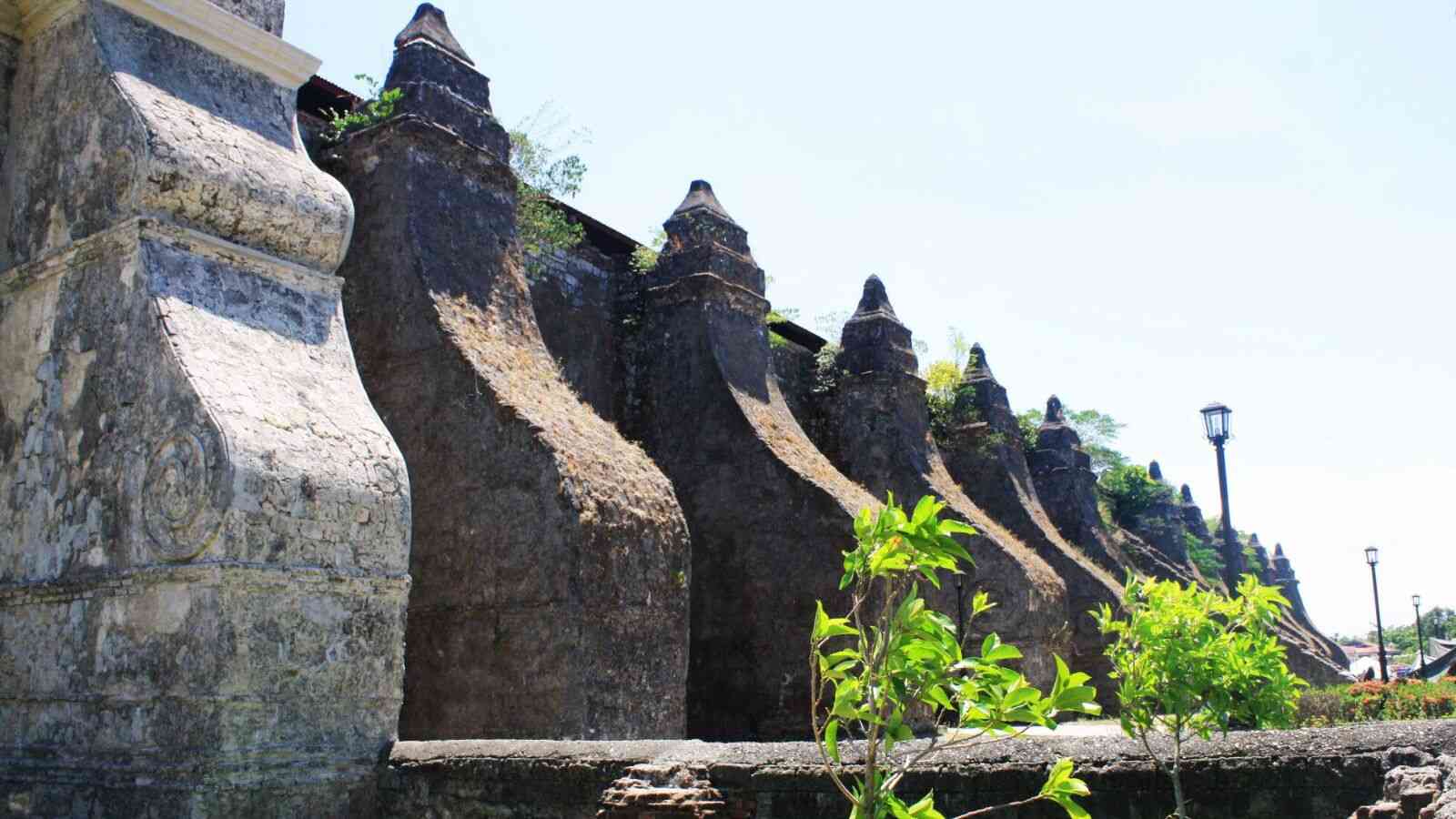
Its key feature is its massive buttresses, which are designed to support the building and withstand seismic activity. This fusion creates a unique aesthetic that makes it more iconic.
14. Baras Church, Rizal (1595)
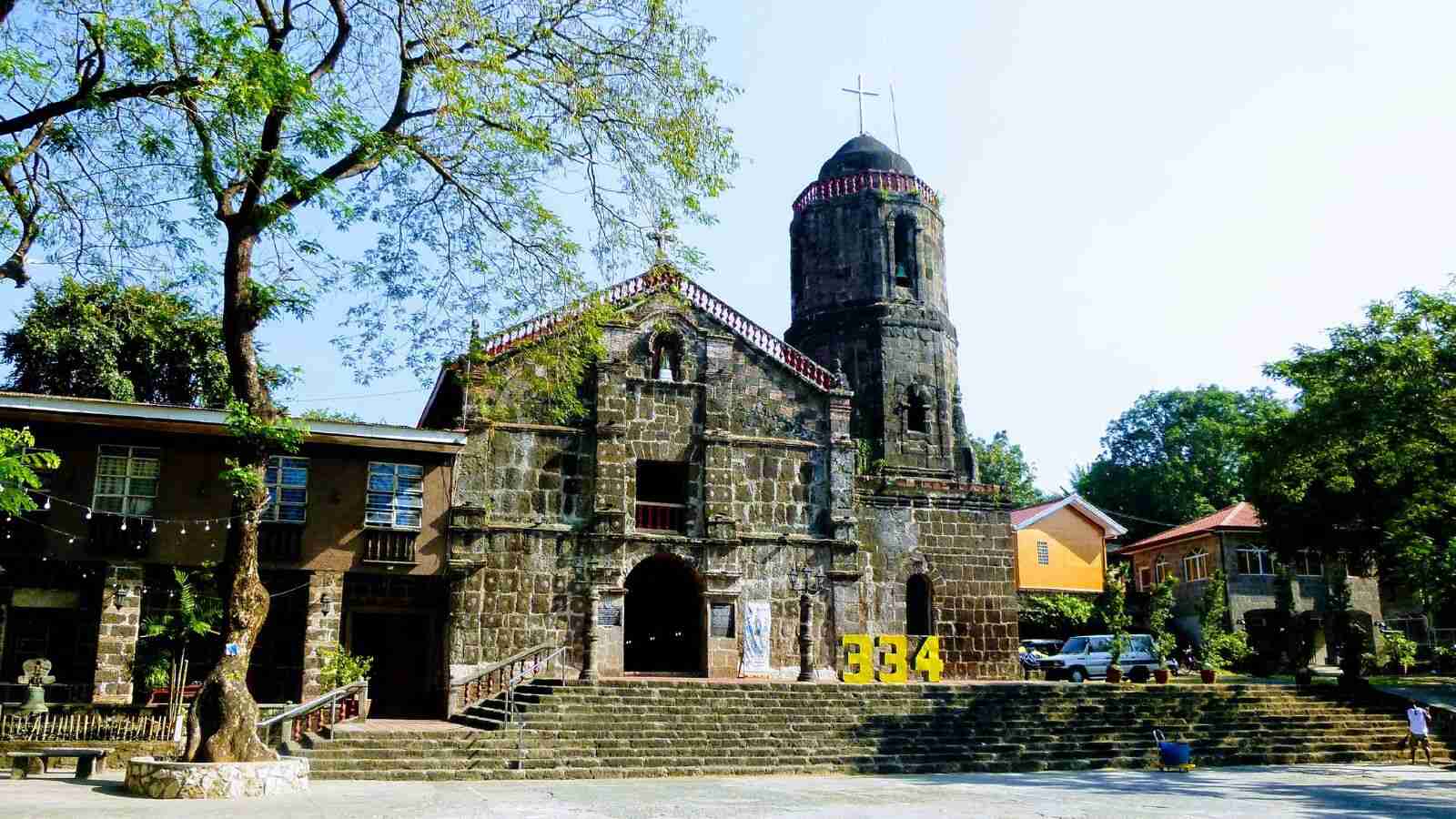
The first church of St. Joseph Parish, also known as Baras Church, was built in 1595 by Franciscan friars. Its design seamlessly combines fortress and barn-style Baroque architecture.
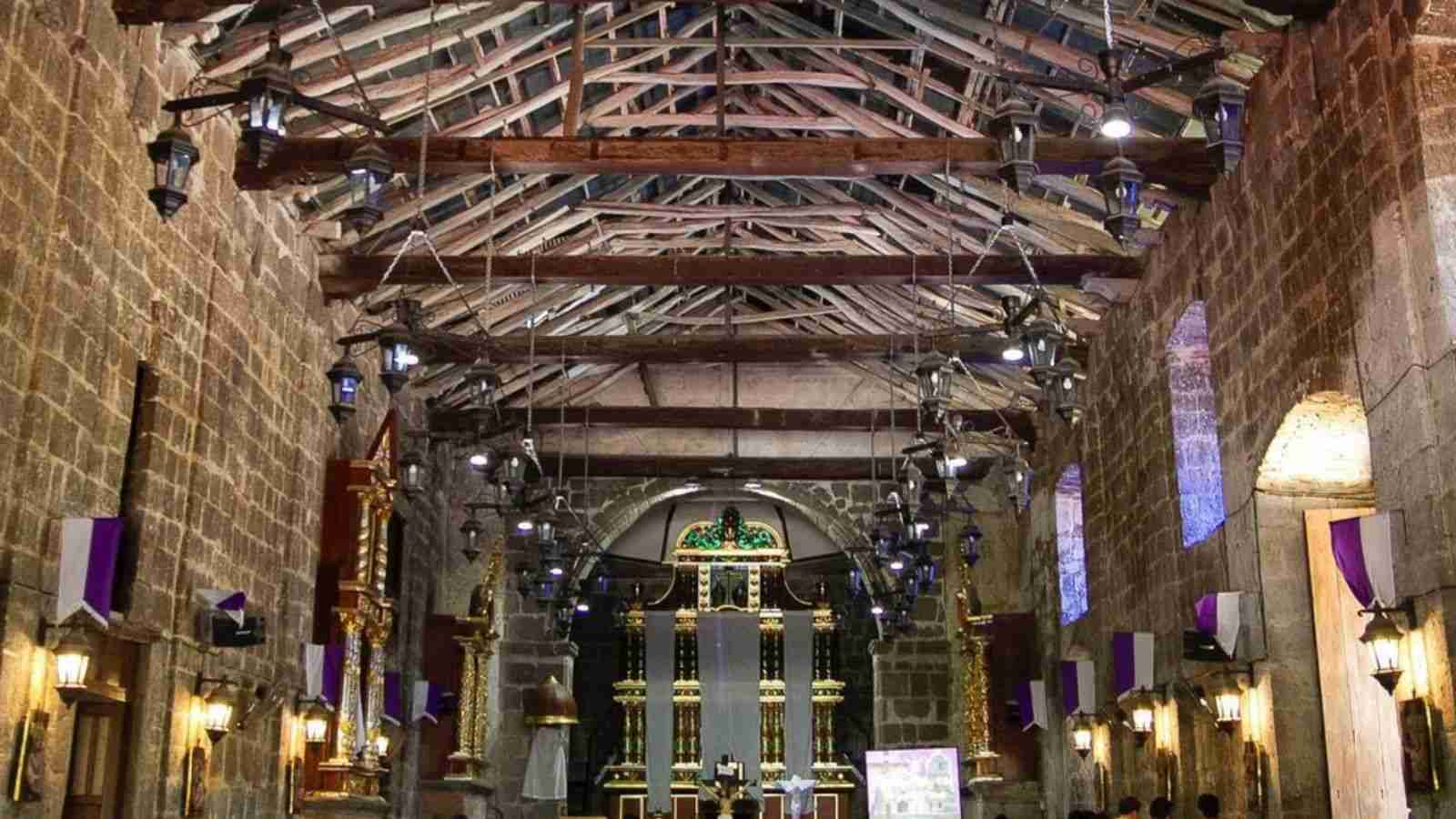
If you walk down its aisle, you can feel the classic aura of the 16th century and imagine our fellow Filipinos wearing their baro’t saya. Seeing those vintage chandeliers and old bricks of stone captivates my old soul.
15. Baclayon Church, Bohol (1596)
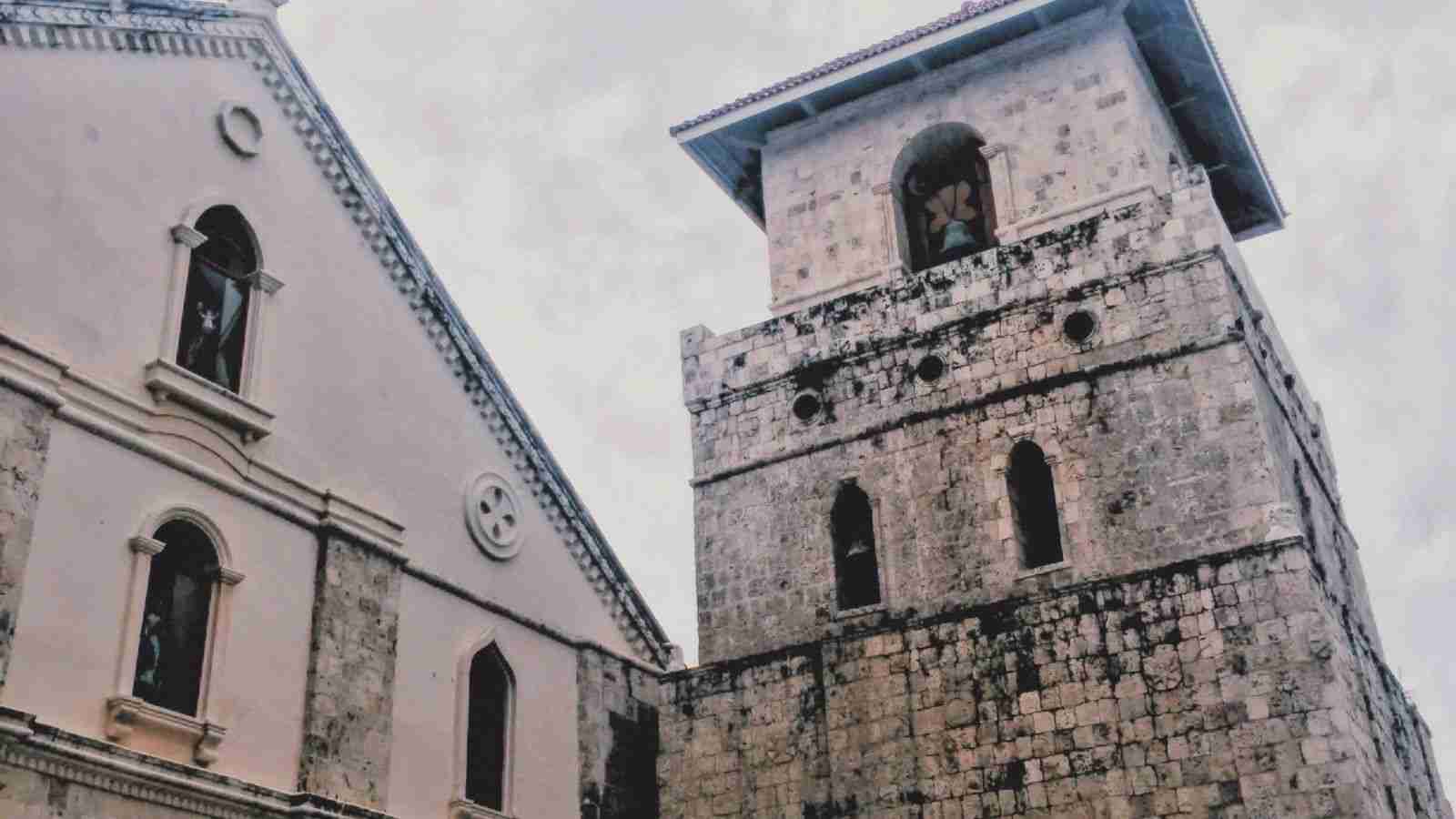
The Baclayon Church in Bohol holds the distinction of being one of the oldest churches in the Philippines. It was founded on November 17, 1596, by the first Jesuits, Father Juan de Torres and Father Gabriel Sánchez.
It is now officially called Church of Our Lady of the Immaculate Conception. The National Museum of the Philippines declared Baclayon Church a National Cultural Treasure. It was also proposed that it be included in the UNESCO World Heritage Sites.
Built using coral stone, the Baclayon Church showcases an understated yet sophisticated architectural design. It is adorned with detailed religious artworks such as paintings, sculptures, and side altars. The main attraction is the splendid main altar, made of marble and adorned with gold and silver elements.
A strong earthquake in 2013 badly damaged the tower and some portions of the church. It was restored and then reopened on February 27, 2018.
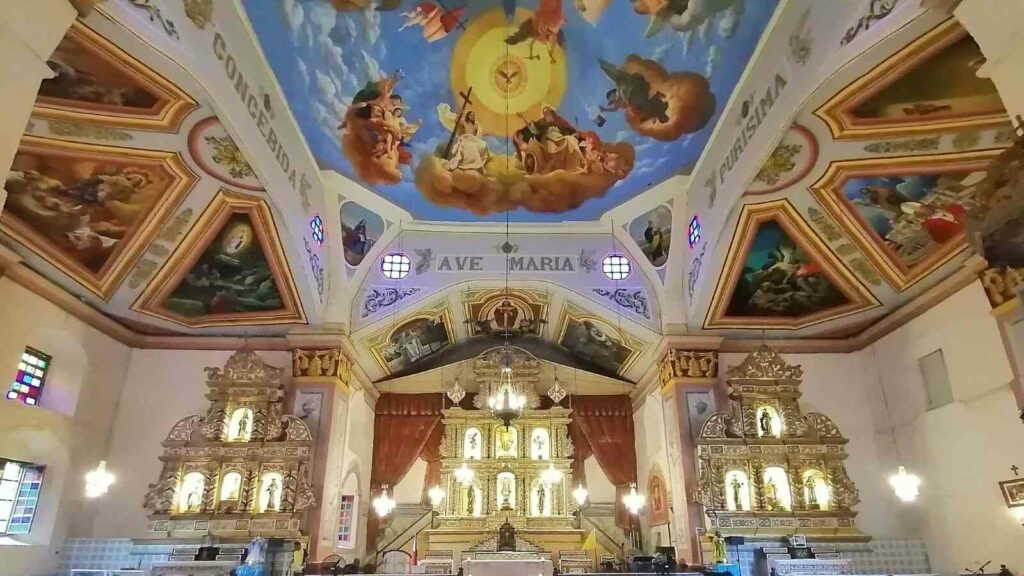
Today, Baclayon Church stands not just as a place of worship but as a living monument of the history and Christian life of the people of Bohol. It’s also one of the popular tourist spots to visit in Bohol, Philippines.
Don’t miss reading: 35 Most Beautiful Places to Visit in the Philippines
Subscribe, (it’s FREE) to receive our latest articles.



